pompei (Oltre 16.000 risultati)
Tipo di articolo
- Tutti gli articoli
- Libri (12.031)
- Riviste e Giornali (316)
- Fumetti (6)
- Spartiti (7)
- Arte, Stampe e Poster (209)
- Fotografie (1.759)
- Mappe (23)
-
Manoscritti e
Collezionismo cartaceo (1.720)
Condizioni
Legatura
Ulteriori caratteristiche
- Prima edizione (697)
- Copia autografata (82)
- Sovraccoperta (547)
- Con foto (9.839)
- No print on demand (14.413)
Spedizione gratuita
Paese del venditore
Valutazione venditore
-
Vedute di Roma. [bound with] PIRANESI, Francesco. Topografia delle fabriche scoperte nella cittá di Pompei.
Editore: Rome Circa & 1785, 1778
Da: Shapero Rare Books, London, Regno Unito
Libro
Two works in 2 vols; folio (550 x 400 mm. approx.); 'Vedute': the complete suite as listed by Wilton-Ely comprising double-page engraved title, double-page engraved frontispiece, 135 double-page engraved plates (including the 2 plates by Francesco Piranesi listed at the end of Wilton-Ely), the watermarks examined appear to conform to Robison 39, 57, 64 and 67; plate 243 [Wilton-Ely] with paper flaw to the centre fold lower margin, not affecting image; Pompei: the complete suite comprising a double-page engraved plate, a large folding plate and a 6-sheet plan, each sheet large and folding (3 with short marginal tear, repaired, 2 touching text); extra-illustrated with the following plates: 'Pianta di Roma e del Campo Marzio' [Wilton-Ely 1008]; 'Prospetto interiore del Tempio Vaticano Il Santo Padre. Vaticano', both of these by Francesco Piranesi; Near contemporary Russia gilt, the covers with broad gilt borders, neatly rebacked, all edges gilt. From the library of Gustav III, King of Sweden (1746-1792), and his Queen Sophia Magdalena of Denmark (1746-1813). A fine complete set of the finest illustrated book on Rome and one of the greatest series of engravings on any subject; the images strong early impressions, clean and fresh. King Gustav travelled to Italy in 1783 buying, amongst other things, a magnificent collection of classical sculptures which are now held in the Museum of Antiquities in Stockholm, Sweden's oldest museum. The King spent the winter in Italy and Piranesi, no doubt eager to curry favour with the royal art lover revised the dedication of Antichita Romane, for the 1784 edition to 'Gustavo III ' One of the greatest printmakers of the eighteenth century, Piranesi always considered himself an architect. The son of a stonemason and master builder, he received practical training in structural and hydraulic engineering from a maternal uncle who was employed by the Venetian Water Authority; while his brother, a Carthusian monk, fired the aspiring architect with enthusiasm for the history and achievements of the ancient Romans. Piranesi also received a thorough background in perspective construction and stage design. Although he had limited success in attracting architectural commissions, this diverse training served him well in the profession that would establish his fame. Soon after his arrival in Rome in 1740, Piranesi apprenticed himself briefly to Giuseppe Vasi, the foremost producer of the etched views of Rome that supplied pilgrims, scholars, artists, and tourists with a lasting souvenir of their visit. Quickly mastering the medium of etching, Piranesi found in it an outlet for all his interests, from designing fantastic complexes of buildings that could exist only in dreams, to reconstructing in painstaking detail the aqueduct system of the ancient Romans. The knowledge of ancient building methods demonstrated by Piranesi's archaeological prints allowed him to make a name for himself as an antiquarian. Etching also provided Piranesi with a livelihood, allowing him to turn one of his favourite activities, drawing the ancient and modern buildings of Rome, into a lucrative source of income. By 1747, Piranesi had begun the work for which he is best known, the Vedute di Roma (Views of Rome), and he continued to produce plates for the series until the year of his death in 1778. Piranesi's popular Vedute, which eclipsed earlier views of Roman landmarks through their dynamic compositions, bold lighting effects, and dramatic presentation, shaped European conceptions to such an extent that Goethe, who had come to know Rome through Piranesi's prints, was somewhat disappointed on his first encounter with the real thing (Metropolitan Museum of Art). John Wilton-Ely (Giovanni Battista Piranesi, The Complete Etchings, San Francisco 1994), 134-268 & 1008; cf. Millard (Italian and Spanish Books), 86.
-
"Pompei di diciotto secoli fa Pompei attuale" è il titolo di una mostra di venticinque gouaches di notevoli dimensioni, 800x1000 mm l'una, di cui oggi si è riusciti a preservarne diciannove (più due manifesti che la pubblicizzavano). Esse furono presentate all'Esposizione Nazionale del 1893 sul tema del raffronto fra "com'era e com'è". (*)Nelle vedute di Antonio Coppola sono raffigurati scorci della città di Pompei così come si presentava ai suoi occhi, e gli stessi luoghi come li immaginava, secondo un'attenta e studiata ricostruzione, prima della devastante eruzione del Vesuvio nel 79 dc.Dopo l'eruzione Pompei divenne un luogo senza tempo. Ne "Il Mattino" (30 Aprile 1 maggio 1893) si legge "E' strano questo sentimento di infinito diletto che la città sepolta e la sciagura sua, sempre presente, produce in noi. Ed è strano come la fantasia competi facilmente, in Pompei, quel che vede, come supplisca quel che le fa difetto, come ricostruisca, anche da pochi ruderi? La vita di quel piccolo centro vi viene tutta innanzi? Perisca chi non sa amare e due volte perisca chi vieta di amare. E' questa la nota costante di Pompei, che pare gridata da tutta quell'arte e che fa interamente dimenticare la sciagura che l'incolse, non appena un raggio di sole, illumina le sue rovine". Scoperto a partire dal 1738, il diciottesimo sarà il secolo d'oro dedicato agli scavi, alle scoperte archeologiche e di conseguenza alle importanti pubblicazioni, si veda ad esempio il ruolo svolto dai volumi dell'Accademia Ercolanese straordinariamente efficace nel diffondere la conoscenza delle scoperte vesuviane, dalle quali derivò il gusto, prima, e la cultura, poi, del neoclassico.Luogo quasi dimenticato per diverso tempo? diventerà di prorompente attualità proprio negli ultimi anni del XIX secolo, quando gli scavi della Va Regione, all'inizio del 1892, incominciarono a portare alla luce una grandiosa casa, che l'anno successivo, in occasione dell'anniversario delle nozze d'argento di Umberto I e Margherita di Savoia, prenderà il nome di "Casa delle nozze d'argento". L'anniversario dei reali fu un'occasione importante per la città di Napoli, che vide il loro arrivo il giorno 27 aprile 1893 per un soggiorno di tre giorni; il 29 fu dedicato al sito di Pompei, dove in onore di Umberto e Margherita, erano stati organizzati degli scavi presso la "Casa delle Nozze d'argento". Il quotidiano dell'epoca, "Il Mattino", nel numero del 27-28 aprile 1893, così riporta "Oggi, il gran giorno. Questa grande festa alla quale la popolazione prende si gran parte, ha sollevato gli animi, ha sparso una grande attività febbrile nella città tutta quanta? Fino a tarda ora, iersera, i treni delle provincie riversarono nella nostra città una fiumana di gente d'ogni ceto, d'ogni colore: quasi dodicimila persone, che appena fuori dal recinto della stazione prendevano d'assalto vetture, alberghi, trattorie, già rigurgitanti di altri passeggieri giunti precedentemente. Lungo le strade che il corteo reale ed imperiale percorrerà, ferveva il lavoro per l'addobbo definitivo de' balconi, de' palchi, e per l'ornamentazione delle strade. Toledo brulicava di una folla ansiosa e variopinta?Nella Galleria Umberto I, poi, non si poteva addirittura muovere un passo. Nel Caffè Starace era un pigiarsi straordinario, un chiamarsi a vicenda, in tutti i dialetti del Mezzogiorno. Un pandemonio. In piazza Municipio non si poteva circolare, Piazza Plebiscito sembrava un mare in burrasca. Dovunque, dovunque un'animazione eccezionale, una festa delle più gaie e delle più caratteristiche.". La febbrile attività vissuta dalla città di Napoli contagiò tutti i campi, anche quello artistico-culturale in cui va inserita la magnifica mostra di gouaches realizzata appositamente da Antonio Coppola, pubblicizzata dai manifesti stampati in litografia dallo Stabilimento Italo Germanico Fratelli Starace di Napoli. In queste opere, di imponenti dimensioni, emerge con delicata forza tutta l'abilità del Coppola nella padronanza del disegno, nella resa dei colori e delle atmosfere dei luoghi. Importante sottolineare la cura posta nell'immaginaria ricostruzione degli ambienti, sempre attenta, meticolosa, studiata e mai improvvisata. Incredibile come dopo più di un secolo il corpus centrale di una mostra sia ancora preservato nella sua interezza, o, comunque, in una totalità capace di trasmettere il motivo di esistere di un'opera di questa levatura.Elenco delle vedute, (i titoli, scritti a matita, sono riportati al retro dell'opera):1. Tempio di Venere ultimo giorno la scarica di pepite di zolfo; 2. Pompei quale era; 3. Pompei attuale; 4. Via delle Rampe - Baccanale; 5. Via delle Rampe attuale; 6. La Suburra qual'era; 7. Interno della Suburra com'è; 8. La Casa del Fauno qual'era. 9. Interno della Casa del Fauno; 10. Le terme qual'erano; 11. Le terme attuali - interno; 12 Interno del Foro; 13. Interno Panteon; 14. Esterno del Panteon; 15. Tempio di Giove - Arco di Caligola; 16. Corsa delle bighe al Teatro Tragico. 17. Anfiteatro stato attuale; 18. Interno Anfiteatro - Teatro tragico attuale; 19. Arco di Caligola. Alcune di queste opere, negli scorsi anni, sono state esposte in importanti musei tra i quali il MANN (Museo Archeologico Nazionale di Napoli), si veda il volume "Ercolano e Pompei visioni di una scoperta" edito da Skira nel febbraio del 2018. ANTONIO COPPOLA - Nato a Napoli il 14 febbraio 1850, o secondo il Servolini, il 21 gennaio 1839 da una nobile famiglia napoletana, Antonio Coppola si dedicò fin da giovane alla pittura compiendo i suoi studi all'Istituto di Belle Arti di Napoli. Autore di molte litografie ma, soprattutto, abile paesaggista, utilizzò prevalentemente la tecnica a tempera che seppe padroneggiare con grande maestria e raffinatezza. Rientrato nella sua città natale dopo un lungo soggiorno in Grecia durato quasi due anni, si dedicò inizialmente a scene di genere di soggetto greco che, tuttavia, abbandonò presto preferendo dedicarsi completamente a marine e vedute.
-
(?) contenant les découvertes, inventions ou expériences nouvellement faites dans les sciences, les arts, les métiers, l'industrie, &c. &c. [titre de départ]. Paris, Deschamps, [puis:] Demoraine, [puis:] Vve Demoraine et Boucquin [et: Imp. de Poulet], 1768-1834, 2 vol. in-4, demi-basane brune, dos lisses ornés de filets dorés et de fleurons à froid, pièces de titre et de tomaison beiges et vertes, tranches marbrées [Rel. du XIXe siècle], rest. 1) 418 ff., soit 44 ff. de format très étroit (25 x 6,5 cm) pour les dix premières livraisons, le reste (35 livraisons, dont la réimpression des dix premières et la table) de format in-4 classique: 374 ff., les 25 derniers contenant la "Table alphabétique et analytique" (1813), 1 planche hors texte (globe aérostatique). Pagination par colonnes: 12, 8 (x 9), 4 (suppl.), 1364 et 96. Les dix premières livraisons sont un peu courtes de marge. - 2) 240 ff. (24 livraisons), 968 colonnes. Grand-Carteret 401: indique que cet almanach a paru de 1768 à 1831 ; la collection de la Bibliothèque historique de la ville de Paris s'arrête en l'an IX ; l'exemplaire de Paul Lacombe, également cité par Grand-Carteret, s'arrête en 1810. Monglond ne cite qu'un exemplaire (dernière livraison en 1831). Quelques fragments sont conservés à la BnF et au Muséum d'Histoire naturelle de Paris. Rarissime publication d'annonces et actualités scientifiques ou industrielles. Elle servait de notice au célèbre Almanach sous verre: "un simple almanach qui, au lieu d'être collé sur le recto et le verso d'un carton, constituait un fascicule broché en hauteur (24 centimètres en hauteur sur 8 de large), par colonnes de mois. Mais il avait un titre et donnait, en outre, le répertoire indicatif des articles de la notice". L'almanach était appelé sous verre "parce que chaque mois se plaçait sous une glace, ainsi que cela se rencontre encore quelquefois dans les campagnes, ces colonnes 'calendaires' ayant, de loin, l'aspect de quelque thermomètre. Peut-être aussi, les éditeurs le livraient-ils sous verre, mais ceci est une simple supposition". Cf. Grand-Carteret, qui n'a pas vu les dix premières livraisons de la Notice sous leur première forme (in-4 étroit), mais seulement la réimpression de 1778, de format in-4 ordinaire: ces dix livraisons, "qui ne se trouvent dans aucun dépôt public", ont été reliées au début de notre exemplaire. Ce périodique à vocation encyclopédique était une véritable "banque de données" constamment mise à jour, sorte de table annuelle des découvertes constituant aussi une précieuse source d'informations bibliographiques: chaque article, numéroté, est annoncé comme l'abrégé d'un texte plus développé, dont les éditeurs tiennent des copies à la disposition des lecteurs qui souhaiteraient approfondir la question. Une quinzaine de rubriques, avec leurs subdivisions, sont représentées de façon plus ou moins constante: Astronomie, Physique, Histoire naturelle, Médecine, Hygiène, Chirurgie, Epizootie, Mathématiques, Arts libéraux, Belles lettres, Economie et Industrie. Les travaux des chercheurs sont commentés et leurs efforts retracés sur plusieurs années. Parmi les principaux savants cités: Lavoisier, Daubenton, Euler, Buffon, Bernoulli, Halley, Herschel, Delalande, Laplace, Volta, Montgolfier, Ulloa, Watson, Benjamin Franklin, Chaptal, Lacépède, Saussure, Cuvier, Dupont de Nemours, Humboldt, Gay-Lussac, etc? Une "Table des noms, qualités et demeures des sçavants, artistes et auteurs des diverses découvertes", indexée selon le numéro de l'information correspondante, complète chaque livraison jusqu'en 1797, date à laquelle elle disparaît. Jusqu'en 1792, la Notice comporte une liste détaillée des cartes, estampes, portraits, etc. publiés dans l'année. Ce sont ainsi des centaines de noms de peintres, dessinateurs et graveurs qui sont offerts à la curiosité de l'amateur et de l'iconophile. Dans le tome II, qui couvre la période 1811-1834, les comptes rendus de voyages et explorations prennent une place toujours croissante, culminant avec les notices sur les grandes expéditions polaires ou africaines: découverte du lac Tchad (1826, p. 605), Voyage de Parry au Pôle Nord, Caillié à Tombouctou (1829, p. 725), projet de percement de l'isthme de Panama? Au même moment, apparaît et se développe une importante rubrique consacrée à l'archéologie: les fouilles de Pompéi et d'Herculanum sont régulièrement commentées. Le seul exemplaire complet. La traversée de la tourmente révolutionnaire explique sans doute en partie l'extrême rareté d'une collection complète de la Notice historique de l'Almanach sous verre, surtout lorsqu'elle contient, comme c'est le cas ici, les dix premières années dans leur condition originelle, imprimées sur des pages très étroites. La réédition de ces livraisons, imprimée par Demoraine vers 1797 et reliée à la suite du premier tirage, est d'une présentation plus aérée, identique à celle des années suivantes: mais elle est beaucoup moins complète que l'originale, l'éditeur ayant en fait sélectionné les informations qu'il jugeait encore d'actualité au moment de la réimpression et éliminé un grand nombre de rubriques, en particulier celle annonçant la publication d'estampes. Ensemble exceptionnel, très bien conservé.
-
Dipinti murali di Pompei. Medaglie Istituto d'Incoraggiamento di Napoli Esposizioni di Londra e Milano. Illustrazione per l'Arch. Ingre. Edoardo Cerillo. Versione francese pel cav. Giulio Cottrau.
Data di pubblicazione: 1886
Couverture rigide. Condizione: Très bon. Proprietà Cav. Uff. Pasquale d'Amelio, Napoli, n.d. [1886].Grand in-folio de (1) f. de couverture, ix pp. (dont le titre lithographié orné d'une vignette), 20 pp. de texte et 20 chromolithographies numérotées. Infimes rousseurs. Conservé en feuilles, tel que paru, dans la chemise de l'éditeur. 630 x 445 mm. --- Rare ouvrage superbement illustré consacré aux peintures murales découvertes à Pompéi aux XVIIIe et XIXe siècles. Le texte qui accompagne les planches est imprimé sur deux colonnes parallèles, en italien et en français et la préface en italien est de Giulio de Petra. L'illustration magnifique se compose de 20 grandes chromolithographies réalisées d'apres l'architecte italien Edoardo Cerillo et gravées par Vincenzo Loria (1850-1939). Elles représentent : la Maison de la Princesse Marguerite, la Maison de Vedius Siricus, la Maison de la petite fontaine en mosaïque, la Maison d'Arianne ou des chapiteaux colorés, la Maison d'Arianne abandonnée, la Maison de Marc Lucrèce, la Maison de la paroi noire, la Maison du poète tragique, la Maison de Castor et Pollux, la Maison d'Orphée, la Panthéon, la Maison du notaire, la Maison de Salluste, la Maison d'Apollon, la Maison de Vedius Siricus, la Maison de la Reine d'Italie, la Maison d'Elpidius Sabinus, la Maison d'Adonis, la Maison du Decumanus Maior, les Thermes Stabianes. Les couleurs extrêmement vives sont considérées comme étant très proches des couleurs originales observées sur le site au moment des fouilles. Le présent ouvrage est extrêmement intéressant car c'est le premier à offrir une vision d'ensemble des compositions murales de Pompei. "The 20 large plates finished last year by Richter & Co., of Naples, and issued by Cavalier Pasqualé d'Amelio, with Italian and French comments in parallel columns, bring into prominence the architectonic side of Pompeiian wall painting. The colors are very close to the originals during the first days of their recovery from the darkn /// Proprieta Cav. Uff. Pasquale d'Amelio, Napoli, n.d. [1886].Large folio [630 x 445 mm], (1) l., ix pp., 20 pp. of text and 20 numbered chromolithographs. Some slight foxing. Preserved in sheets, as issued, in the editor's portfolio. --- A rare work dedicated to Pompeian wall paintings discovered in the 18th and 19th centuries.The text that comes with the plates is printed in two parallel columns, both in Italian and in French, and the Italian preface was written by Giulio de Petra.The magnificent illustration consists of 20 large chromolithographs produced after the Italian architect Edoardo Cerillo and engraved by Vincenzo Loria (1850-1939). They represent: la Maison de la Princesse Marguerite, la Maison de Vedius Siricus, la Maison de la petite fontaine en mosaïque, la Maison d'Arianne ou des chapiteaux colorés, la Maison d'Arianne abandonnée, la Maison de Marc Lucrèce, la Maison de la paroi noire, la Maison du poète tragique, la Maison de Castor et Pollux, la Maison d'Orphée, la Panthéon, la Maison du notaire, la Maison de Salluste, la Maison d'Apollon, la Maison de Vedius Siricus, la Maison de la Reine d'Italie, la Maison d'Elpidius Sabinus, la Maison d'Adonis, la Maison du Decumanus Maior, les Thermes Stabianes. "The 20 large plates finished last year by Richter & Co., of Naples, and issued by Cavalier Pasqualé d'Amelio, with Italian and French comments in parallel columns, bring into prominence the architectonic side of Pompeiian wall painting. The colors are very close to the originals during the first days of their recovery from the darkness of 2000 years, before the hot Neapolitan sun has bleached some of the pigments and induced a delicacy of tone which was not meant by the painters. The text is written by an architect, Edoardo Cerillo, who is not only well read in the great literature that deals with this famous little buried town, but has ideas of his own, and bold ones. He calls attention to the value of these compositions, invented to gi.
-
A large archive of printed and manuscript material, including drafts of shows and lectures, including portions of Mont Blanc, Mont Blanc to China, poetry, dramatic pieces, a juvenile poem, letters to his sister Laura, a copy of his will.
Editore: [1820s to 1860s.], 1858
Da: Bernard Quaritch Ltd ABA ILAB, London, Regno Unito
Condition variable but generally good, some portions tightly folded or rolled, some secured with a pin or stitched, many loose.Albert Richard Smith (1816 1860) trained as a surgeon but shortly afterwards turned to the world of letters, becoming a regular contributor to Bentley's Miscellany and Punch; he adapted works by his friend Dickens for the theatre and edited The Man in the Moon (1847 9). 'During the course of his career Smith published nearly thirty books. His novels, more notable for their wit than their plots, enjoyed modest commercial success but little critical acclaim Smith became best known, however, for his entertaining lectures about his travels in the 1850s.' He journeyed to Constantinople and Egypt in 1849 and ascended Mont Blanc in 1851, both of which became the subject of shows. Mont Blanc was a runaway success, running for 6 years (and 2000 performances), and was even performed before the Queen in 1854. It earned Smith a fortune in merchandise; it also established the peak as a major tourist destination at a time it was still infrequently climbed. In between each season he would travel to the Alps, taking a different route, in search of new content and exhibits for his shows. In 1854 for example his route to Chamonix took in Holland and Germany not France, and in 1856 he travelled via Genoa, Naples, Pompei and Capri. Seeking more exotic material, in 1858 Smith went to Hong Kong. The result of this last journey was Mont Blanc to China, which combined all his famous shows into one blockbuster. This series was cut short by his death of bronchitis in May 1860. The present archive is a fascinating one, spanning Smith's whole career, with a few pieces relating to other members of his family. The earliest item is some touching autograph 'Verses written at the time he was in affliction and crying.24 Miles from his dear Mama and home' (c.1826?), when he was sent to board at Merchant Taylor's School at the age of ten. The last are copies of his will and the sale notice for his house North End Lodge in Fulham in 1860; and the printed In Memoriam for his brother and business partner Arthur Smith in 1861. The main body of the archive though comprises more than 45 autograph drafts (or partial drafts) for scenes from Smith shows, some present in multiple versions, and most showing evidence of the extensive process of revision that Smith undertook as he performed then re-used material there are collages of printed cuttings and manuscripts, carbon copies, sections cut out and new portions inserted, and loose scraps of notes. Many contain instructions for staging and for the music to be played at certain points of the action. Contents include:ShowsThe Ascent of Mont Blanc 1857 scripts for new scenes describing his visits Pompei, Naples, Malta and Capri as well as chapter in Chamonix (in total 60+ leaves); an issue of The Mont Blanc Gazette for 1858.Mont Blanc to China: a printed programme, draft manuscripts (with heavy editing) of Part I sections 1-4 (complete), and Part II sections 1-5, some fragmentary, section 1 in two drafts. Also 'China (second season)' (in total 50+ leaves).Other dramatic pieces and prose'Anthony and Cleopatra'. A curious pageant featuring a conversation between Osiris, a mummy, and the comedian Robert Keeley (Smith's father-in-law). With the fantastic line 'The mummies join awkwardly in the dance ' 'The Water of Life'. Scenes 1, 3 (fragile and fragmentary) and 4 of an unidentified piece featuring King Pantagruel, Prince Fastiman, Prince Prettyman, and Princess Amy. At one point they travel in a 'steam nautilus'. Carbon copies.'"Tell Truth and shame the !" (A supernatural interlude, in one act)'. 'The Pedigree of a Petticoat'.'The Gentleman who feared he was not believed', two drafts.Several interludes involving a Yankee, and others featuring the travellers Brown Senior and Junior (recurring characters in the shows).Poetry'Verses written at the time he was in affliction and crying.24 Miles from his dear Mama and home' (c.1826?). 'The Table d'Hote'. Written on the blank versos of four copies of The Destruction of Chamouni by Fire 1858, a leaflet printed by Smith soliciting subscription funds in aid of the inhabitants.'The Mediterranean Steamer'.A packet of verse written on cards, mostly political in nature.Personal materialAutograph letter to his sister Laura Eady, December 1859, inviting his nephew for a visit 'during the pantomimes'.Letters to Laura Smith (later Eady) from Richard Smith (father, d.1857), c.1820-30; Eliza Frances Smith (sister), 1838; and Harriet Boileau (several, London and India, 1840).Conduct book of Eliza Frances Smith, 1-28 August 1832. A charming juvenile behaviour diary: e.g.Sunday 5. 'Was shockingly tiresome suppose it was because of the sad wet day. 6.Worried sadly & was so irritable I was obliged to be beaten but was much bitten by gnats & itched which I think was the cause'. Language: English.
-
Recueil de Griffonnis, de vues, paysages, fragments antiques et sujets historiques gravés tant à l'eau forte qu'au lavis par Mr. L'Abbé Saint Non, amateur honoraire de l'Academie de Peinture d'après différents maîtres des écoles italiennes, et de l'école française. First edition.
Editore: Paris: la veuve Lavoye, [1755-78], 1755
Da: Wittenborn Art Books, San Francisco, CA, U.S.A.
Arte / Stampa / Poster
Condizione: Good. 2 vols. Large folio. 56 x 39 cm, Contemporary quarter roan with brown marbled boards. Etched title page in one volume and letterpress table of contents in the other. Complete with the 296 plates called for on 163 leaves. Some foxing. OCLC Number: 80333578.2 volumes grand in folio : 1f. (titre gravé dans médaillon allégorique), 40 planches (divers sites, temples, paysages), Rome (52 planches) ; Venise (38 planches) ; Bologne (38 planches). Soit un total de 168 planches en 85 feuillets/ 1f., Naples (20 planches) ; Herculanum (20 planches) ; Antique (28 planches) ; 45 planches (paysages, Rome, caricatures, portraits, temples). Soit un total de 113 planches en 79 feuillets. L'ensemble des deux volumes comptent 281/296 planches sur 164 feuillets. Papier bien blanc. Planches gravées à l'aquatinte, à la manière du lavis, et à l'eau-forte (une soixantaine environ) d'après les dessins d'ANGO, BOUCHER, CLODION, Della BELLA, DOYEN, ELCHENER, GREUZE, le prince, LAUTHERBOURG, MONNET, NORDLIGEN, PARIS, REMBRANDT, H. ROBERT, D. & G. TIEPOLO et FRAGONARD (nombreux griffonnis d'après les dessins de FRAGONARD).½ basane fauve de l'époque, dos lisse, pièce de titre rouge, filets dorés, frottements, épidermures, frottements sur coupes, angles émoussés.L'abbé de Saint Nom, amateur des arts, a fait en Italie un séjour assez long pour y pouvoir réunir une collection de ce que ce pays renferme de plus intéressant en tableaux italiens et fragments antiques qu'il y a fait dessiner par les meilleurs artistes, et qu'il s'est plu à graver lui-même. L'ensemble de la collection "italienne" (Naples, Herculanum, Pompéi, le Vésuve) est composé d'une suite de paysages (41 planches), de vues de Rome (54 planches), de Venise (38 planches), de Boulogne (40 planches), de Naples (30 planches), d'Herculanum (20 planches), d'antiques (28 planches), de temples (17 planches), de cahier de caricatures (27 planches), pour un total de 296 planches (feuillet de description). Il a fallu, pour entreprendre une suite aussi nombreuse, une manière de graver plus expéditive que la gravure à l'eau forte ; Saint Nom a eu recours à un genre qui imite le dessin lavé à l'encre de Chine. A Paris, Saint Nom fréquenta les ateliers des peintres (Boucher et Leprince), tout comme ceux de graveurs (WILLE et TUBIERES de GRIMOARD de PESTELS de LEVIS). Il apprit l'aquatinte grâce à Leprince, technique qu'il utilisa à merveille pour la réalisation de son travail de transcription des oeuvres italiennes et antiques.
-
[VUES PITTORESQUES DES RUINES LES PLUS REMARQUABLES DE L'ANCIENNE VILLE DE POMPÉI]
Editore: by the author and Henry Fuessli and Comp 1824-25, Zurich, 1824
Da: Phillip J. Pirages Rare Books (ABAA), McMinnville, OR, U.S.A.
Prima edizione
FIRST EDITION. 445 x 325 mm. (17 1/2 x 12 3/4"). [26] leaves of descriptive text. Lacking title page and dedication.Commentary by art historian Johann Jacob Horner. Modern tan half morocco over olive green buckram, raised bands, spine panels with gilt ornament, red morocco label. 24 FINE AQUATINT VIEWS COLORED BY A CONTEMPORARY HAND. Brunet III, 357. â Text pages variably foxed (from a little to very), but (somehow) THE LOVELY PLATES IN FINE, CLEAN CONDITION--fresh and bright with pleasing coloring, in an unworn, sympathetic binding. This is a rare complete colored set of Hüber's famed views of Pompeii, much sought-after by armchair travellers after excavations uncovered that urban time capsule in the late 18th century. The German-born Hüber (1787-1871) settled in Naples in his early 20s, studying landscape painting with Dutch émigré painter Jacob Philipp Hackert (1737-1807), who was known for his lush scenes, often featuring ruins. His arrival in the region coincided with the occupation of Naples by the French, who accelerated the excavations underway at Pomepii, which had been buried by the eruption of Vesuvius in 79 A.D. The rapid burial of the city in volcanic ash had captured a moment in time, and the opportunity to see a well-preserved example of life in the ancient Roman Empire caught in medias res drew eager travellers on the Grand Tour of the Continent. Hüber's well-executed views often picture these tourists, and their contemporary dress contrasts sharply with the classical ruins. Lord Napier, in his "Notes on Modern Painting at Naples" (1855), credits Hüber for introducing the use of watercolors to the meticulously drawn landscapes then being produced. This innovation is displayed in the hand-colored plates here, which were also issued in uncolored state. Napier was correct to appreciate the value of adding colors, which increases both the drama of the views and the pleasure of the viewer. Because the attractive sets with color were often broken up, complete volumes of the colored plates are rarely seen for sale: we could trace just three such copies sold at auction as listed in RBH and ABPC (the two best ones were the Feltrinelli copy, which sold for $14,330 in 2001 and the Donaueschingen copy, fetching $13,750 in 2014). Ours does not have the distinguished provenance attached to those copies, and it lacks two preliminary leaves, but the text is present, and, most important, the lovely colored plates are in fine condition.
-
Collana Scrittori d'Italia Laterza, Completa
Editore: Laterza & Figli, Bari 1910-1987, 1987
Da: Pali, Roma, RM, Italia
completa, nn 1-273, ottimo stato, brossura. o seta editoriale. Gli Scrittori d'Italia è una collana di testi fondata nel 1910 e conclusa nel 1987 dall'editore barese Laterza[1]. La collana nasceva con l'obiettivo di definire e divulgare un canone della cultura della nuova Italia, prendendo le distanze da una cultura troppo ancorata ai classici dell'Umanesimo e scegliendo di rappresentare anche la storia civile, ma non per questo meno importante, della neonata Italia. Il piano originario della collana prevedeva 660 volumi, per un totale di 179 opere. 1. Benedetto Croce (a cura di), Lirici marinisti, 1910 2. Matteo Bandello, Le novelle, a cura di Gioachino Brognoligo, 1910. 2. Matteo Bandello, Le novelle, a cura di Gioachino Brognoligo, 2ª ed., 1910. 3. Carlo Gozzi, Memorie inutili, a cura di Giuseppe Prezzolini, 1910. 4. Giambattista Della Porta, Le commedie, a cura di Vincenzo Spampanato, 1910. 5. Matteo Bandello, Le novelle, a cura di Gioachino Brognoligo, 1910. 5. Matteo Bandello, Le novelle, a cura di Gioachino Brognoligo, 2ª ed., 1910. 6. Traiano Boccalini, Ragguagli di Parnaso; Pietra del Paragone politico, a cura di Giuseppe Rua, 1910. 6. Traiano Boccalini, Ragguagli di Parnaso e scritti minori, a cura di Luigi Firpo, 1910. 7. Luigi Blanch, Della scienza militare, a cura di Amedeo Giannini, 1910. 8. Carlo Gozzi, Memorie inutili, a cura di Giuseppe Prezzolini, 1910. 9. Matteo Bandello, Le novelle, a cura di Gioachino Brognoligo, 1910. 9. Matteo Bandello, Le novelle, a cura di Gioachino Brognoligo, 2ª ed., 1910. 10. Merlin Cocai (Teofilo Folengo), Le maccheronee, a cura di Alessandro Luzio, 1911. 11. Giambattista Vico, L'autobiografia, il carteggio e le poesie varie, a cura di Franco Nicolini, 2ª ed., 1929. 12. Jacopo Vittorelli, Poesie, a cura di Attilio Simioni, 1911. 13. Giuseppe Baretti, Prefazioni e polemiche, a cura di Luigi Piccioni, 1911. 14. Vincenzo Gioberti, Del rinnovamento civile d'Italia, a cura di Fausto Nicolini, 1911. 15. Teofilo Folengo, Opere italiane, a cura di Umberto Renda, 1911. 16. Vincenzo Gioberti, Del rinnovamento civile d'Italia, a cura di Fausto Nicolini, 1911. 17. Matteo Bandello, Le novelle, a cura di Gioachino Brognoligo, 1911. 18. Giovanni Berchet, Poesie, a cura di Amedeo Giannini, 1911. 19. Merlin Cocai (Teofilo Folengo), Le maccheronee, a cura di Alessandro Luzio, 1911. 21. Giambattista Della Porta, Le commedie, a cura di Vincenzo Spampanato, 1911. 22. Carlo Gozzi, La Marfisa bizzarra, a cura di Cornelia Ortiz, 1911. 23. Matteo Bandello, Le novelle, a cura di Gioachino Brognoligo, 1912. 24. Vincenzo Gioberti, Del rinnovamento civile d'Italia, a cura di Fausto Nicolini, 1912. 25. Ireneo Sanesi (a cura di), Commedie del Cinquecento, 1912. 26. Giuseppe Baretti, La scelta delle lettere familiari, a cura di Luigi Piccioni, 1912. 27. Giovanni Berchet, Scritti critici e letterari, a cura di Egidio Bellorini, 1912. 28. Teofilo Folengo, Opere italiane, a cura di Umberto Renda, 1912. 29. Giambattista Marino; seguito da lettere di altri scrittori del Seicento, Epistolario, a cura di Angelo Borzelli e Fausto Nicolini, 1911. 29. Giambattista Marino; seguito da lettere di altri scrittori del Seicento, Epistolario, a cura di Angelo Borzelli e Fausto Nicolini, 1912. 30. Marco Polo, Il milione: secondo la riduzione italiana della Crusca riscontrata sul manoscritto arricchita e rettificata mediante altri manoscritti italiani, a cura di Dante Olivieri, 2ª ed., 1928. 31. Francesco De Sanctis, Storia della letteratura italiana, a cura di Benedetto Croce, vol. 1, Nuova edizione, 1912. 31. Francesco De Sanctis, Storia della letteratura italiana, a cura di Benedetto Croce, vol. 1, 7ª edizione nuovamente rivista da Alfredo Parente, 1962. 32. Francesco De Sanctis, Storia della letteratura italiana, a cura di Benedetto Croce, vol. 2, Nuova edizione, 1912. 32. Francesco De Sanctis, Storia della letteratura italiana, a cura di Benedetto Croce, vol. 2, 7ª edizione nuovamente rivista da Alfredo Parente, 1962. 33. Alessandro Donati (a cura di), Poeti minori del Settecento: Savioli, Pompei, Paradisi, Cerretti ed altri, 1912. 34. Santa Caterina da Siena, Libro della divina dottrina, volgarmente detto Dialogo della divina provvidenza, a cura di Matilde Fiorilli, Nuova edizione secondo un inedito codice senese, 1912. 34. Santa Caterina da Siena, Libro della divina dottrina, volgarmente detto Dialogo della divina Provvidenza, a cura di Matilde Fiorilli, 2. edizione interamente riveduta da Santino Caramella, 1928. 35. Giovanni Guidiccioni, Francesco Beccuti, Rime, a cura di Ezio Chiorboli, 1912. 36. Relazioni degli ambasciatori veneti al Senato: Ferrara, Mantova, Monferrato, 1912. 37. Giuseppe Zonta (a cura di), Trattati d'amore del Cinquecento, 1912. 38. Ireneo Sanesi (a cura di), Commedie del Cinquecento, 1912. 39. Traiano Boccalini, Ragguagli di Parnaso; Pietra del Paragone politico, a cura di Giuseppe Rua, 1912. 39. Traiano Boccalini, Ragguagli di Parnaso e scritti minori, a cura di Luigi Firpo, 1948. 40. Girolamo Parabosco, Sebastiano Erizzo, Novellieri minori del Cinquecento, a cura di Giuseppe Gigli e Fausto Nicolini, 1912. 41. Annibal Caro, Opere, a cura di Vittorio Turri, 1912. 42. Ugo Foscolo, Prose, a cura di Vittorio Cian, 1912. 43. Vincenzo Cuoco, Saggio storico sulla rivoluzione napoletana del 1799 seguito dal Rapporto al cittadino Carnot di Francesco Lomonaco, a cura di Fausto Nicolini, 1913. 44. Pietro Metastasio, Opere, a cura di Fausto Nicolini, 1912. 45. Alessandro Donati (a cura di), Poeti minori del Settecento: Mazza, Rezzonico, Bondi, Fiorentino, Cassoli, Mascheroni, 1913. 46. Pietro Metastasio, Opere, a cura di Fausto Nicolini, 1913. 47. Augusto Graziani (a cura di), Economisti del Cinque e Seicento, 1913. 48. Giovanni Fantoni (Labindo), Poesie, a cura di Gerolamo Lazzeri, 1913. 49 Relazioni degli ambasciatori veneti al Senato: Milano, Urbino, 1913. 50 Cesare Balbo, Della storia d'Italia dalle origini fino ai nostri giorni: sommario, a cura di Fausto Nicolini, 19.
-
Voyage pittoresque ou Description des royaumes de Naples et de Sicile.
Editore: Paris [Clousier] 1781-1786, 1786
Prima edizione
Condizione: 7. 4 tomes en 5 vol. in-folio, plein veau marbré fauve, dos à six nerfs avec pièces de titre et de tomaison de maroquin rouge et vert, caissons décorés de fleurons et dentelles dorés, triple filet doré en encadrement sur les plats, roulette dorée sur les coupes, tranches cailloutées, reliure de l'époque. Tome I : faux titre, titre, épître gravé + XIII pp. (avant-propos, table, etc.) + 252 pp., tome II : faux titre, titre, XXVIII pp. (avant-propos et table) + 283 pp. + 4 ff. marqués d'astérisques (un entre les pp. 78-79 et trois entre les pp. 108-109), tome III : faux-titre, titre, IV pp. (avant-propos) + XL pp. (discours préliminaire) + 201 pp. + 14 ff. supplémentaires (2 ff. marqués d'astérisques à la page 112 et 12 ff. numérotés 1 à 22 à page 130), tome IV 1ère partie : faux titre, titre, II pp. + XVIII pp. + 266 pp + 2 ff. (table), tome IV 2ème partie : faux titre, titre, IV pp. (avant-propos) + 1 f. (table) + pp. 267 à 429. Édition originale de ce célèbre récit de voyage, superbement illustré de 304 planches, dont 11 cartes, 1 plan de la ville de Naples, 1 carte théodosienne, et 14 planches de médailles, plus de nombreux culs-de-lampe et vignettes dans le texte, dont 25 en deux tons en rouge et noir à la manière des vases grecs antiques, le tout finement gravé en taille-douce d'après les dessins de Choffard, Cochin, Duplessis-Bertaux, Fragonard, Houel, Hubert Robert, Saint-Non, etc.Exemplaire conforme à la description de Brunet (V, 55), avec les planches 87 et 88 du tome III en premier tirage, et sans la planche du Phallus comme souvent. Cet ouvrage d'exception, considéré comme l'un des plus beaux illustrés du XVIIIe siècle, permit à toute l'élite européenne de découvrir les régions de Naples, de la Calabre, des Pouilles et de la Sicile. L enthousiasme lié à cette publication provient en grande partie du soin apporté par l'abbé de Saint-Non (1727-1791) à l originalité des sujets et à l'impression des dessins et des gravures. L'ensemble forme l un des appareils descriptifs et didactiques les plus complets de l époque. Proche des encyclopédistes, passionné d'art et d'archéologie, l'abbé de Saint-Non consacra toute sa fortune à cette ambitieuse aventure éditoriale. Tout commence à l'automne 1777, lorsqu'à la demande de l'abbé Saint-Non et de son associé Jean-Benjamin de Laborde, Dominique Vivant Denon (1747-1825) se rend dans le sud de l'Italie pour diriger une petite équipe de voyage, composée de deux dessinateurs (Claude-Louis Châtelet et Louis-Jean Desprez) et d'un architecte (Jean-Augustin Renard). En échange de la prise en charge des frais, Denon accepte de fournir le journal de ce "voyage pittoresque". L'on sait aujourd'hui que l'abbé Saint-Non, qui poursuivit seul l'édition, s'est fortement inspiré dudit journal pour rédiger l'ouvrage. Vivant Denon et ses compagnons rendent compte à leur commanditaire de sujets alors en vogue dans les milieux culturels napolitains. Ils se passionnent pour les fouilles de Pompei et d'Herculanum, pour la volcanologie naissante et sont les témoins privilégiés des débuts de l'archéologie. Cette expérience initiatrice se poursuit pour Vivant Denon jusqu'en 1787 à Naples où il mènera une carrière diplomatique. Il faut cependant rendre à l'abbé de Saint-Non la dimension didactique et la volonté d'exhaustivité qui se dégagent de ces 4 tomes, fruit d'un travail nourri de ses propres voyages en Italie, de ses relations avec les artistes de son temps, dont ses amis Hubert Robert et Fragonard, et enfin de la qualité de ses estampes vives et délicates. Reliure frottée avec manques de cuir, mouillures.
-
Photographie originale inédite de Pablo Picasso à la Casa di Marco Lucrezio, Pompéi printemps 1917
Data di pubblicazione: 1917
Fotografia Prima edizione
Pas de couverture. - Paris 1917, 6,3x8,6cm, une photographie. - Photographie originale, représentant Pablo Picasso au printemps 1917 à la Casa di Marco Lucrezio à Pompéi, une brindille à la main, devant un mur sur lequel apparaît une fresque pompéïenne. Tirage argentique d'époque, peut-être unique, provenant des archives personnelles de Jean Cocteau puis du fonds Maurice Sachs. Exceptionnelle photographie inédite prise par Jean Cocteau lors de son séjour pompéien avec Picasso. Le 16 avril 1917, Picasso visite Pompéi en compagnie de Jean Cocteau et Léonide Massine afin de préparer le ballet Parade, première uvre qualifiée de sur-réaliste par Guillaume Apollinaire, pour la nouvelle saison des Ballets russes de Serge de Diaghilev. Ce voyage initiatique lui inspire, dès son retour, une peinture monumentale?: le rideau de scène de Parade, véritable signature visuelle du ballet, marquant les débuts de la période néo-classique de Picasso, et aujourd'hui conservé au Musée national d'Art Moderne Georges Pompidou. Pierre Daix, dans sa biographie consacrée au peintre, relate le choc esthétique engendré par la découverte des fresques pompéiennes?: «?Giovanni Carandente, à qui l'on doit les meilleures études sur ce voyage, souligne que Picasso "fut fortement frappé par l'animation et la sensualité que le cataclysme de l'an 79 après J.-C. avait brutalement anéanties". S'il est exact, comme il l'écrivit à Gertrude Stein, qu'il dessina sur-le-champ "beaucoup de fantaisies pompéiennes qui sont un peu lestes", attiré comme il le fut par l'exaltation érotique qui se dégage de ces peintures licencieuses [.] ces souvenirs se sédimentèrent en lui pour affleurer avec force par la suite. [.] Tout ce qui avait constitué l'univers pompéien était conservé sur le site ainsi qu'au Museo Archeologico de Naples [.]. Dans sa singularité, cet univers contribua à enrichir le patrimoine culturel de Picasso de quelque chose de plus vivant, de plus frémissant que ce que ses visites de musées lui avaient donné jusqu'alors. Il aimait tout particulièrement la concision des peintures?: deux ou trois ans plus tard, les impressions ressenties à Pompéi devaient se traduire par une véritable explosion créatrice, une série de tableaux qui tous portaient des traces de ces souvenirs jamais enfouis. Cette source devait rester vivante jusqu'à La Danse de 1925.?» (Pierre Daix, Picasso) Unique et précoce photographie originale de Picasso, prise et tirée par son ami Jean Cocteau, dans un lieu mythique qui influencera durablement son esthétique. Provenance?: archives personnelles de Jean Cocteau puis le fonds Maurice Sachs puis Max-Philippe Delatte. [ENGLISH TRANSLATION FOLLOWS] Original photograph, likely unique and unpublished, of Pablo Picasso at the Casa di Marco Lucrezio, Pompeii spring 1917 Paris 1917 | 6,3 x 8,6 cm | one photograph Original photograph depicting Pablo Picasso in the spring of 1917 at the Casa di Marco Lucrezio in Pompeii, holding a twig, in front of a wall on which there is a Pompeian fresco. Contemporary silver print, perhaps unique, from Jean Cocteau's personal archives then the Maurice Sachs collection. Exceptional almost undiscovered and probably unpublished photograph taken by Jean Cocteau during the stay. On 16 April 1917, Picasso visits Pompeii accompanied by Jean Cocteau and Léonide Massine to prepare the ballet Parade, the first work described as "surrealist" by Guillaume Apollinaire, for the new season of Serge de Diaghilev's Ballets Russes. On his return, this initiatory journey inspired his monumental painting: the Parade stage curtain, a real visual signature of the ballet, marking the beginnings of Picasso's neo-classical period, and today preserved at the Musée national d'Art Moderne Georges Pompidou. Pierre Daix, in his bibliography dedicated to the painter, recounts the aesthetic shock caused by the discovery of the Pompeian frescoes: "Giovanni Carandente, to whom we owe the best studies on this trip, highlights that Picasso "was stron.
-
BALLETS RUSSES. PROGRAMME. PARIS 1917. Les Ballets Russes a Paris. Représentations Exceptionelles avec le gracieux Concours des Artistes de M. Serge de Diaghilew. - Programme des Ballets Russes. Les Ballets Russes à Paris. Saison - Mai 1917. [Guillau. - [HAND-PAINTED BY PICASSO - COINING "SURREALISM"]
Da: Lynge & Søn ILAB-ABF, Copenhagen, Danimarca
Membro dell'associazione: ILAB
Paris, Mai 1917. Folio. Original illustrated extra wrappers (with a picture by Picasso on the front and the décor for "Baba Iaga" on the back)" original illustrated wrappers for "Théatre du Chatelet" (drawing by André Marty on front, and advertisements on back) in grey and red" original illustrated coloured wrappers for "Programme des Ballets Russes" (front wrapper illustrated by Picasso with the Chinaman-costume from "Parade"). A bit of soiling to the extra-wrappers and small professional restorations to upper front cover and top of spine (this barely noticeable) as well as to blank margin of back wrapper. Apart from that, an excellent and very well perserved copy with only slight browning to some leaves. Apart from the described wrappers and extra-wrappers, there are, in all, 24 leaves with -mostly photographic- illustrations (four of them with original hand-colouring on top) and 6 leaves of text.With the original errata-leaf laid in loose, stating also that the illustrations "Femmes de bonne humeaur" and "Parade" have been hand-painted by Carlos Socrate, after the designs of Bakst and Picasso, and that the front wrapper for "Parade" (the Chinaman) has been handpainted by Picasso himself. Scarce original printing of this seminal avantgarde-publication, the May 1917 "Théatre du Chatelet"- publication that presents Diaghilev's "Ballets Russes" in Paris - here containing the entire separate publication mainly devoted to Jean Cocteau's groundbreaking ballet "Parade" - being one of the most important publications in the history of modern art. It is here, in his presentation-article to "Parade" that Apollinaire coins the term "surrealism" and thus lays the foundation for the seminal cultural movement that Bréton came to lead. Furthermore, the ballet "Parade" represents a historical collaboration between several of the leading artistic minds of the early twentieth century: Erik Satie, Jean Cocteau, Pablo Picasso, Léonide Massine, and Serge Diaghilev, and is famous, not only for its contents and its music, but also for its magnificent costumes designed by Picasso, the drawings of which are presented in the present publication for the first time - most famously the front cover for the "Parade"-programme, which depicts the "Costume de Chinois du ballet "PARADE"/ Aquarelle de Picasso", an etching with original, stunning pochoir-colouring (hand-painted by Picasso himself!).It is the 1917 ballet "Parade" - the first of the modern ballets - originally presented for the first time in the present publication, that marks Picasso's entry into the public and bourgeois institutions of ballet and theatre and presents Cubism on the stage for the first time. The present publication constitutes an outright revolution in the history of art, theatre, and ballet.Several variants of this spectacular publication exist, but the one we have here is as original and complete as it comes, containing the entire contents of the different variants. We not only have the extremely scarce and fragile dust-wrapper and the equally scarce illustrated coloured double-wrappers (front: "Peinture de Picasso"" back: Décor de Larionow pour le ballet "BABA IAGA"), but also the entire 1917 "Théatre du Chatelet"-programme (in original illustrated wrappers) with the entire separate "parade"-issue -also entitled "Programme des Ballets Russes"- (also in original illustrated wrappers), with more than 20 leaves of photographic illustrations containing pictures of the actors and actresses, also in their spectacular avant-garde-costumes, Bakst's portrait of Leonide Massine, Picasso's portrait of Stavinski, Bakst's portrait of Picasso, Picasso and Massine in the ruins of Pompei, Picasso's drawings of a scene from "Parade" and of Massine, as well as several (mostly humorous) advertisements. But more importantly, we have, apart from the above-mentioned famous Chinaman by Picasso, in original pochoir-colouring, the other famous etching by Picasso "Costume d'acrobate du ballet "Parade"/ Aquarelle de Picasso", also in original pochoir-colouring (bright blue), the seminal presentation-article by Apollinaire, which coins the term "surrealism" (see bottom of description for full translation of this groundbreaking preface), the two "Les Femmes de Bonne Humeur"-figures by Bakst, Constanza and Battista, printed and heightened in gold (pochoir), the printed costume by Larionow, "Les contes russes", which is with original bright red and blue pochoir-colouring, and the "Le Mendiant"-costume by Bakst for "Parade", and, of course, the texts by Bakst (on choreography and décor), Georges-Michel (Ballets Russes after the War), as well as the texts for the various ballets (listing the actors and their rôles as well as a resume of the plot). " "Tact in audacity consists in knowing how far we may go too far." Jean Cocteau, poet, writer, and arts advocate, made this statement in his 1918 manifesto, The Cock and Harlequin. Cocteau, in collaboration with Erik Satie and Pablo Picasso, discovered "how far" to "go too far" in the circus-like ballet Parade-one of the most revolutionary works of the twentieth century. Parade incorporates elements of popular entertainment and uses extra-musical sounds, such as the typewriter, lottery wheel, and pistol, combining them with the art of ballet. Cocteau wrote the scenario for the one-act ballet and contracted the other artists. Satie wrote the score to the ballet, first in a piano four-hands version and then in full orchestration, while Picasso designed the curtain, set, and costumes. Later, Léonide Massine, a dancer with the Ballet Russes, was brought in as the choreographer. Serge Diaghilev's Ballet Russes premiered the ballet Parade on May 18, 1917. The program notes for the ballet were written by the poet Apollinaire. They became a manifesto of l'esprit nouveau or "the new spirit" which was taking hold in Paris during the early twentieth-century. Apollinaire described the ballet Parade as "surrealistic," and in doing so creat.
-
Le case ed i monumenti di Pompei disegnati e descritti. 2 volumes
Da: Meretseger Books, Paris, Francia
Extremely rare set of 2 volumes. Stabilimento Fratelli Niccolini, Napoli, 1854-1862. First edition. Elephant folio. Volume I: ca 200 pages of text, 89 chromolithographed plates. Volume II: ca 200 pages of text, 107 chromolithographed plates. Contemporary half-leather, browned, but well preserved, inside in excellent condition, a magnificent set. These are the first two volumes (of four) of this famous and fascinating work on the most important houses of Pompei. The work was followed by two additional volumes in 1890 and 1896. The two volumes are complete with all their plates and illustrate the following houses (the number in parenthesis indicate the number of plates for each house): Volu;e I: Casa del poeta tragico (8); casa di Castore e Polluce (11); casa della seconda fontana (6); tempio della fortuna (2); casa del fauno (9); casa n. 57 (3); casa di Sirico (2); Panteon (6); tomba d'Umbricio (1); tempio di Mercurio (1); casa di Capitelli colorati (4); sepolcro di Nevoleja (1); casa di Marco Lucrezio (9); terme alla Porta Stabiana (8); caserrma de' Gladiatori (5); teatri (3); tempio d'Iside (12). Volume II: villa Diomede (7); casa di Capitelli figurati (3); cenotafio di C. Quieti (1); descrizione generale (96). Rare and in excellent condition. Language: . This set ships from Europe, shipping costs will be updated accordingly (BPF). Relevant subjects: Rome.
-
Preghiere. Miniature di Vittorio Vulten.Torino, Carlo de Martini (printed by Stab. Litografico Giovanni Fraschini & C., Milan), 1902. 18mo (13.5 x 7.5 x 1.5 cm). A wholly chromolithographed Art Nouveau prayer book, printed in numerous pastel colours plus gold, with (mostly floral) decoration on every page and numerous additional illustrations. In a silver binding (hallmarked "800" at the foot of the otherwise blank back cover), with "Our Lady of the Rosary" from the shrine of the Virgin of the Rosary in Pompei depicted on the front cover in high relief (madonna and child presenting rosaries to Saint Dominic and Saint Catherine) flanked by two irises, above "Ave Maria" and a panel with "SS. Vergine di Pompei", endpapers lithographed in pastel colours plus gold, in a repeating pattern of abstracted flowers, crosses, anchors, hearts and initials "VD" or "DV", gilt edges.
Da: Antiquariaat FORUM BV, Houten, Paesi Bassi
Copia autografata
[104] pp.A lovely, wholly chromolithographed Catholic prayer book in Art Nouveaux style and in a high relief hallmarked silver binding. The text was written by Luigi Condio, a church canon in Torino and author of several editions of Manuale di preghiere. The illustrations and decorations were drawn by the Torino miniaturist and calligrapher Vittorio Vulten, who no doubt calligraphed the text as well. Condio's preface is dated from Torino, 11 May 1902, and the book was almost certainly published that year. Some preliminary pages are signed in the plates by two Cardinals: Mariano Rampollo (1843-1913) in Rome, whose expected election as Pope in the following year was vetoed by the Austrian Emperor; and Agostino [Richelmy] (1850-1923) of Torino.Book and binding in very good condition. A splendid little prayer book with chromolithographed illustrations and decorations on every page and with a high-relief rendering of Our Lady of the Rosarie on the silver binding.l Not in ICCU; KVK; WorldCat.
-
Porte di città e fortezze depositi sepolcrali ed altre principali fabbriche pubbliche e private di Michele Sammicheli Veronese. Misurate, disegnate, incise e brevemente illustrate da Ferdinando Albertolli Professore di Ornato nella C.R.Accademia delle Belle Arti in Milano.
Editore: Milano, Cesarea Regia Stamperia 1815., 1815
Da: Hugh Pagan Limited, Brockenhurst, HANTS, Regno Unito
First and only edition of this impressive and visually arresting volume which provides very handsome illustrations in sepia aquatint of the principal buildings attributed at that time to the able Renaissance architect Michele Sanmicheli (c.1485-1559). These include the notable series of entrance gateways designed by Sanmicheli for his native city of Verona, as well as the three best-known town houses designed by him for the Veronese aristocracy (Palazzo Bevilacqua, Palazzo Guastaverza and Palazzo Pompei). Albertolli also provides illustrations of equally striking gateways designed by Sanmicheli for the Castello Sant?Andrea di Lido in Venice, for the fortress of Legnago, near Ferrara, and for the town of Zara in Dalmatia. Other plates illustrate the Palazzo La Soranza at Castelfranco and a series of wall monuments in churches in Verona. All the sepia aquatint plates were drawn and engraved by the volume?s author, Ferdinando Albertolli (1781-1844), and the volume is a real credit to Albertolli?s skills as a graphic artist, as well as providing the first really accurate illustrations of buildings by Sanmicheli. The compilers of the BAL Catalogue describe the present book, perplexingly, as a ?modest volume? (BAL Cat 60), but what they had in mind was evidently not its physical size or aesthetic appeal but the fact that it was less comprehensive in its treatment of Sanmicheli?s architectural output than the subsequent study of it by Ronzani and Luciolli, published in 1828-30 (which was however illustrated by outline engravings only).Although the present volume is held in older libraries, it is rare in the book trade today and this is very much the best copy of it that we have ourselves seen. Cicognara 394. Large oblong folio. 10 + (2)pp, (30) engraved plates (of which 21 are sepia aquatints, the remainder outline engravings of details or engraved ground plans). Contemporary marbled paper boards, calf spine. A good, fresh copy.
-
Les Géorgiques. Texte latin et version française de l'abbé Jacques Delille. Gravures sur bois d'Aristide Maillol.
Editore: Les Frères Gonin, Paris, 1937
2 volumes in-4, box beige rosé orné sur les plats et le dos dun décor de filets verticaux poussés or et à loeser gris parmi lesquels sinsèrent des pièces verticales de maroquin vert bouteille ornées dépis de blé en relief et rehaussés à la feuille dor; doublures de box vert bouteille marbré, gardes de tabis gris, tranches dorées sur brochure, couvertures imprimées. Chemises, étuis (Manuel Gérard).104 bois originaux d'Aristide Maillol, dont certains répétés, et 9 lettrines et bouts de lignes également gravés sur bois. ".En 1908, lors d'une croisière en Grèce, Aristide Maillol avait fait escale à Naples et à Pompeï. Il rapporta de ce voyage l'idée d'illustrer les Géorgiques. A son retour, il exécuta nombre de dessins. Peu de temps après, taillant lui-même une planchette dans le corps d'un vieux poirier, abattu par l'orage, de son verger de Banyuls, il grava le premier bois, celui qui représente des épis de blé, et put heureusement le sauver en 1915 de l'incendie qui détruisit son atelier de Montval. Dans les années qui suivirent, Maillol exécuta d'autres gravures, à Collioures, à Banyuls, à Marly-le-Roy. Puis il abandonna l'oeuvre. C'est seulement au début 1937, sous mon impulsion, qu'il reprit son ancien projet. Il ébaucha d'après nature, de multiples études qui remplissent de nombreux albums et carnets. Je reçus le dernier bois (celui qui figure les abeilles sur les fleurs) en septembre 1944. Quelques jours plus tard, la mort fermait les yeux du sculpteur". (Extrait de la postface de Philippe Gonin). Tirage unique limité à 750 exemplaires numérotés sur papier spécial pur chanvre et lin Maillol-Gonin (la justification de tirage est à la page 30 du tome premier). Exemplaire enrichi dune des 100 suites à part sur pur chanvre et lin des bois originaux en noir, des bois originaux en sanguine, accompagnée de 10 gravures en premier état tirées en sanguine sur chine. Chacune des épreuves de cette suite est justifiée et porte le monogramme de lartiste. Elles ont été reliées à part en un troisième volume orné sur les plats dun décor identique à celui des deux reliures du livre.
-
Plutarchi Chaeronensis quae extant opera, cum Latina interpretatione. Ex vetustis codicibus plurima nunc primùm emendata sunt, vt ex Henr. Stephani annotationibus intelliges: quibus & suam quorundam libellorum interpretationem adiunxit. Aemylii Probi De vita excellentium imperatorum liber
Editore: Geneva, Henri Estienne, 1572 [Geneva] Henri Estienne 1572, [Geneva], 1572
Condizione: Buono (Good). Seven volumes, 8° (174x105 mm). I. Collation: *8, a-z8, Aa-Cc8. 16, 778, 2 of [6] pages, lacking the blank Cc7 and Cc8, but complete with the blank Cc6. II. Collation: aa-zz8, AA-PP8. [2], 781-1381, 3 of [5] pages, lacking the blank PP8, but complete with the blank PP7. III. Collation: aaa-zzz8, AAA-YYY8. [2], 1389-2101, 3 of [5] pages, lacking the blank YYY8, but complete with the blank YYY7. IV. Collation: a-z8, A-M8, N10; 579, [1] pages. V. Collation: a6, b8, Cc-Zz8, aA-rR8. [2], 583-1213, [3] pages. VI. Collation: Aa-Zz8, Aaa-Vvv8, Xxx10. [2], 1219-1923, [1] pages. VII. Collation: [A]-[M]8, [N]6, [O]-[Z]8, [AA]-[FF]8, [GG]4. 467, [1] pages. Complete with fol. [N]6 blank. The set comprises only the Greek portion of the edition, and therefore does not include the volumes containing the Latin translation of Plutarch's work. For this reason, volume VII includes ? as in most of the recorded copies ? the Appendix, but not the final Index rerum et verborum. Greek, roman, and italic type. Woodcut printer's device on the title-page of the first volume. Woodcut decorated initials and headpieces. Eighteenth-century uniform binding, vellum over pasteboards. Smooth spine, divided into compartments by gilt fillets; title and volume numbering in gold on double green morocco lettering-piece. A set in good condition, leaves uniformly browned, some foxing. A pale spot to the upper margin of the first leaf of text in each volume due to an ownership inscription that was later erased.Provenance: the Italian poet Ugo Foscolo (1778-1827; white wax-stamp with the initials 'L.F.' on the front pastedown of the first volume; a loose paper slip is inserted in the same volume, bearing the hand written note 'N. 1552 du Catalogue de la Bibliothèque du Monsignor Foscolo vendu par autorité de justice de la Depositeria urbana pas le Ministere de libre Agazzi. La 1ere vente devais avoir lieu le 4 xmbre 1843 mais enfait la vente n'a eu lieu qu'en 1844 et le N. 1552 n'a été vendu qu'à la vacation en date du 22 mars 1844'). In Foscolo's own hand the emendations on fols. Aa2r and Aa8 of the sixth volume, and some underlining in red pencil.An exceptional set of the first complete edition of Plutarch's works, edited by Henri Estienne ?avec correction et elegance? (Renouard), and once owned by the outstanding Italian poet and patriot Ugo Foscolo. The seven-volume set includes only the Greek part of Estienne's publication, supplemented with his Appendix.Foscolo's interest in the 'divine Plutarchus' was already evident in his famous epistolary novel Le ultime lettere di Jacopo Ortis, in which Plutarch's works are the beloved reading of the main character. Foscolo began to write the Discorsi sopra gli uomini illustri di Plutarco at the beginning of the nineteenth century; of this work, only the Proemio or Preface ? dated 1 January 1801 ? was completed. On 25 July of the same year he was appointed director of an office in Milan created to put into writing the military code of the Cisalpine Republic, which had been established in 1797; on 3 August he was moved to the fourth section of this office and charged with the writing of disciplinary and penal rules. For this purpose, in a letter addressed on 7 August to the Minister of War, Vincenzo Lancetti, Foscolo requested some books, which he considered necessary for his writing, among others ?Plutarco. Vite degli uomini illustri?, i.e., Plutarch's Parallel Lives. The missing publication date forbids certain identification of the Plutarch edition which was later supplied by Lancetti, and the subsequent course of Foscolo's private library is very complex. His collection was bought by his friend Quirina Mocenni Magiotti in 1816, when Foscolo decided to self-exile himself in London, and it later came mostly into the possession of the Biblioteca Marucelliana in Florence: among the books recorded in the Florentine library is the Italian-language edition of Vite di Plutarco volgarizzate da Girolamo Pompei, printed in Verona betw. Book.
-
[Italian Trades and Costumes]
Editore: Naples & Rome: , 1824, 1824
Da: David Brass Rare Books, Inc., Calabasas, CA, U.S.A.
Prima edizione
A Fascinating Album Containing Thirty Superb Hand Colored Lithographs of Italian Trades and Costumes FERRARI, Filippo. LENGHI, Giacomo. [Costumi No. XXX di Roma e di altri paesi dello Stato pontificio, designati ed incini all' acqua forte da Filippo Ferrari]. [Italian Trades and Costumes]. Naples & Rome, [1824-1835]. An album of thirty fine hand colored lithograph plates and one original gouache painting. Folio (12 x 8 3/4 inches; 305 x 222 mm.). Twenty two (of thirty) fine hand colored lithograph plates plates heightened with gum arabic, mostly with tissue guards, and one fine gouache painting. Many of the plates neatly inscribed in ink â Dorothea Power, March 21st 1835'. Eight hand colored lithograph plates by Giacomo Lenghi and one original gouache painting - possibly by Giacomo Lenghi. Contemporary quarter dark green straight-grain morocco over marbled boards, smooth spine decoratively tooled and lettered in gilt, marbled endpapers. Neatly inscribed in ink on front blank leaf "Constance Hastings, Sharavogue, from Granny'" Some of the original tissue guards crease or torn, the second plate with a small 5/8 inch lower margin tear, otherwise fine. Dorothea Power who has inscribed her name and the date 1835 on many of the plates was most likely the sister or cousin of Lady Constance Hastings. It is possible that she was a highly accomplished colorist who colored a plain version of the book - or that she just signed her name. what is certain is that the coloring is of the highest quality with the typical use gum arabic to heighten the lithographs (see note from Hiler below). "Also known with plates in black and white. The plates have been reproduced in color for [part 1] of Costumes des differens etats de l'Italie." (Hiler). Rare: The last copy to appear at auction was in 1983. According to OCLC there are just five copies recorded in libraries and institutions worldwide: Univ. of San Francisco (CA, USA); Yale Univ. Library (CT, USA); Univ. of Georgia (GA, USA);The British Library (UK) and Kunstbiblio Staatliche Museen zu Berlin (Germany). Provenance: Lady Constance Wilmot Annie Hastings Pasley (1870-1922) daughter of Francis Power Plantagenet Hastings, 14th Earl of Huntingdon and Mary Anne Wilmot Westenra. Lady Contance married Major Sir Thomas Edward Sabine Pasley, 3rd Bt. in 1890. The family home was Sharavogue House, Sharaovoge, County Offaly, Ireland. Sharavogue house was completely destroyed by fire in the 1920s. By descent to Thomasina Beck, granddaughter of Lady Constance Hastings. Filippo Ferrari (1819-1897) "was a disciple and imitator of Bartolmeo Pinelli (1781-1835), a popular painter of Roman folk costumes and rural life. In this series of plates, Ferrari illustrates various types of Roman dress as well as the costume of the surrounding areas within the Vatican State. It is an expanded edition of an 1826 issue which contained only 15 plates. Ferrari had originally trained as a sculptor and was employed in stage design being responsible, for example, for a well-known scene of the eruption of Vesuvius for La Scala Theatre in Bologna." (Bobins, 1222). Giacomo Lenghi published Raccolta di Costumi Napoltani. [Napoli], 1854as well as the three-panel frescoe of Pompei (ca. 1840). The Victoria & Albert Museum, London has a few examples of Giacomo Lenghi's lithographs including "Bagatterello". The Plates: 1. Ritorno della Madôna dell'Arco (lith. A. Ledoux) 2. Venditore di Sorbetto 3. Brigante Calabrese (lith. Ledoux) 4. Briganta Calabrese (lith. A. Ledoux) 5. Venditrice di Uova (L. Ledoux) 6. Venditòre d'Olio (lith. A. Ledoux) 7. Ritorno della Madôna dell'Arco (lith. A. Ledoux) 8. Facchino Napolitano 9. Donna Ciociara (Ferrari Fece. Roma 1825) 10. Eminente di Roma (Ferrari) 11. Donna di Nettuno (Ferrari Fece. Roma 1825) 12. Donna di Norcia 13. Donna di Frascati (Ferrari Fece. 24) 14. Donna di Tagliacozzo (Ferrari Fece.) 15. Donna di Civita Castellana (Ferrari Fece. 1825) 16. Ciociaro (Ferrari Fece. 1825) 17. Donna di Ponte Corvo 18. Donna di Serre (F. Ferrari Fece. 1825) 19. Fusagliaro. Costume di Camerino. (F. Ferrari Fece. 1825) 20. Matriciana (Ferrari Fece.) 21. Donna di Cingoli (F. Ferrari Fece. Roma 1825) 22. Original watercolor [Untitled] Possibly by Filippo Ferrari? 23. Donna di Palestrina (F. Ferrari Fece. 1825) 24. Donna di Alatri (F. Ferrari Fece. 1825) 25. Donna di Pofi (F. Ferrari) 26. Donna di Sora di Campagna 27. Donna di Terni (F. Ferrari Fece.) 28. Donna dell'Atricia (F. Ferrari Fece. 1825) 29. Donna di Filettino (F. Ferrari Fece.) 30. Donna di Cori (F. Ferrari Fece.) 31. Donna di Castel Madama (F. Ferrari) Bobins IV, 1222; Colas I, 1046; Hiler, p. 310; Lipperheide I, 1276.
-
Landschaft mit dem rauchenden Vesuv.
Da: Galerie Joseph Fach GmbH, Oberursel im Taunus, Germania
Arte / Stampa / Poster
Condizione: sehr guter Zustand. Aquarell und Deckweiß, über Bleistiftskizze, auf bräunlichem festem Zeichenpapier, rechts unten monogrammiert, bezeichnet und datiert HTh (ligiert) Pompei 80". 35:46,8 cm. Verso an den Ecken Reste alter Verklebung. Literatur: H. Thode: Thoma. Des Meisters Gemälde, Stuttgart/Leipzig, DVA, 1909, Abb. S. 152 unten. (1858-1901) und im Auftrag seines Sammlers und Förderers Charles Minoprio aus Liverpool, einem gebürtigen Frankfurter und wichtigster Mäzen Thomas in dieser Zeit, brach Thoma im März 1880 zu seiner zweiten Italienreise auf. Minoprio hatte für sich und seine Freunde bei Thoma ca. zehn italienische Motive in Auftrag gegeben. Am 2., 3. und 8. April 1880 sind drei Zeichnungen mit Motiven aus Neapel und von Sorrent entstanden, die sich im Besitz der Staatlichen Kunsthalle Karlsruhe befinden (Ausst. Katalog: Hans Thoma 1839-1924. Zum 150. Geburtstag, Karlsruhe 1989, Nr. 62-64, Farbabb. S. 62, 63 und 64). Eine Variante des Motivs schuf Thoma 1880 auch als Gemälde.
-
Esquisses pittoresques et déscriptives de la ville et des environs de Naples&
Editore: Napoli,, 1832
Da: Studio Bibliografico Benacense, Riva del garda, Italia
Tre volumi di cm. 29, pp. (8) iv, 63 (1); (2) 79 (1); (2) 60, 8. Con bel frontespizio generale figurato, tre frontespizi particolari e 80 tavole fuori testo, ciascuna protetta da velina. Il tutto in litografia a firma Gigante e Wenzel. Legatura coeva in piena percallina decorata, dorsi lisci con filetti e titoli in oro su doppi tasselli. Sguardie marmorizzate con ex libris nobiliari. Bruniture limitate ai margini di parte delle tavole del secondo volume, altrimenti esemplare assolutamente genuino, marginoso ed in ottimo stato di conservazione. Non comune raccolta completa di quest'opera che rappresenta uno dei gioielli della tipografia napoletana del tempo. Così suddivisa: prima parte: Chemin de Naples a Cumes; seconda parte: Vues de Naples et de ses principaux édifices; terza parte: Ruines d'Herculanum et de Pompèi.
-
Vues pittoresques des ruines les plus remarquables de l`ancienne ville de Pompei. Dessinees et gravees a l`aqua tinta.
Editore: Zürich, Fuessli, 1824 (- 1832)., 1824
Da: Matthaeus Truppe Antiquariat, Graz, Austria
Libro Prima edizione
28 Bll. 24 Aquatinta-Tafeln. Erste Ausgabe, selten. - Brunet III, 357f.: "Ouvrage assez bien executé" - Seltenes vollständiges Exemplar des Ansichtenwerks von Pompeji mit den schönen, in Sepia gedruckten Aquatintatafeln. Den begleitenden Text verfaßte der Züricher Archäologe Jacob Horner. - Jakob Wilhelm Huber (1787 - 1821) begann sich während seiner Ausbildung bei Jakob Christoph Miville mit der italienischen Landschaft zu beschäftigen. "als Vorbilder dienten ihm Claude Lorrain, Nicolas Poussin und Herman van Swanevelt. In den Jahren 1805 07 widmete er sich, durch die Landschaften von Ludwig Hess angeregt, auch vorübergehend der Darstellung der Alpen. 1808 begab sich Huber auf Wanderschaft, unter anderem, um dem Militärdienst zu entfliehen: Ein halbes Jahr weilte er in München; 1808 09 war er in Wien an der Kunstakademie und als Zeichenlehrer tätig; nach einem Aufenthalt in Karlsruhe 1809 1810 gelangte er schliesslich mit der befreundeten Wiener Malerin und Radiererin Sophie Reinhard im Herbst 1810 nach Rom. Landschaftsstudien in Stadt und Umgebung. Bekanntschaft mit Joseph Anton Koch und Peter Cornelius. In Begleitung des Wiener Malers Joseph Rebell, Sophie Reinhards und der Mailänder Künstlerin Bianca Milesi reiste Huber 1812 nach Neapel; ab 1815 nahm er dort festen Wohnsitz. 1816 Reise durch Sizilien; Jahre später verwendete er sechs Studien für `La Salles Voyage pittoresque en Sicile`. 1821 wegen des Carbonari-Aufstandes in Neapel über erschiedene Zwischenstationen Rückkehr nach Zürich. Bevor er sich dort 1824 endgültig niederliess . Wilhelm Huber gehörte zu den zahlreichen Künstlern, die in Italien für ein touristisch interessiertes Publikum Veduten produzierten. Im Umgang mit Koch und Johann Christian Reinhart erkannte er seine Bestimmung vor allem als Zeichner solcher Landschaftsdarstellungen. Zu den Persönlichkeiten, die ihn im Atelier aufsuchten, gehörten der österreichische Kaiser Franz II. und die Königin von Württemberg, der Huber später seine pompejanischen Veduten widmete. Daneben entstanden in und um Neapel Naturskizzen sowie ab 1817 Studien in den Ruinen von Pompeji. Zwischen 1823 und 1832 arbeitete Huber an der Herausgabe eines Prachtbandes mit 24 pompejanischen Ansichten mit Kommentaren des Zürcher Altertumsforschers Johann Jakob Horner (Ruinen Pompejis, Zürich 1832)" (Paola von Wyss-Giacosa [1998], in: SIKART Lexikon zur Kunst in der Schweiz, Zugriff vom 24.05.2016). - "In 1810, as part of his apprenticeship and journeyman `Wanderjahre`, Jakob Wilhelm Huber went to Rome and later Naples to pursue his interest in Italian landscape painting. Eventually he developed a special concern for Naples and the nearby ruins of Pompeii. Sensing the preferences of his clientele, he recorded in 1817 in sketches and watercolours the picturesque ancient ruins. After Huber`s politically motivated return to Zurich in 1821, this material formed the basis for his 24 aquatint veduta, published between 1824 and 1832 by Heinrich Füssli as `Vues pittoresques de Pompéi`. Accompanied by a commentary by the Zurich philologist Jacob Horner, the aquatints entered the market in two editions: a more modest uncoloured one, and a coloured de luxe edition" (Graphische Sammlung ETH Zürich). - Vorsatz mit Besitzvermerk in Tinte, Block gebrochen, leicht gebräunt, vor allem an den Rändern braunfleckig. *** *** Copyright: Matthaeus TRUPPE Buchhandlung & Antiquariat - Stubenberggasse 7 - A-8010 Graz - ++43 (0)316 - 829552 *** *** Sprache: Deutsch Gewicht in Gramm: 2100 Fol. Pp. des 19. Jahrhunderts mit Rückenschild (bestoßen).
-
Voyage du jeune Anacharsis en Grèce, vers le milieu du quatrième siècle avant l'ère vulgaire. Quatrième Édition.
Editore: A PARIS, DE L'IMPRIMERIE DE DIDOT JEUNE, L'AN VII [1799]., 1799
Da: LIBRAIRIE HÉRODOTE JEAN-LOUIS CECCARINI, Paris, Francia
Membro dell'associazione: ILAB
Libro
Couverture rigide. Condizione: Bon. 4ème Édition. 7 vol. grands in-4° (370 x 280 mm) et 1 atlas grand in-folio (560 x 368 mm) ; demi-maroquin rouge à petits coins, dos long très joliment orné, fleurons or, filets or, titre or, reliure uniforme de l'époque, bel exemplaire. Édition en partie originale, la plus complète et la dernière préparée par l'auteur. L'atlas comprend 39 grandes gravures sur cuivre, cartes, plans et vues, dont 15 cartes établies par Barbié du Bocage et gravées par Tardieu l'Estrapade, 15 plans de sites de batailles, 8 vues et élévations gravées par Pillement d'après Bourgeois, et une planche de médailles par Saint-Aubin. Géographe, cartographe, Jean-Denis Barbié, dit Barbié du Bocage (1760-1825), qui consacra l'essentiel de ses travaux à la cartographie de l'Antiquité, parvient à faire bénéficier l'édition de 1799 de notables améliorations issues des avancées faites depuis la première édition de 1788. 7 vues sont accompagnées de leur eau-forte. La plupart des cartes sont coloriées. L'ensemble est accompagné de 56 pages d'analyses des cartes et d'une page de description des médailles. L'UN DES TRÈS RARES EXEMPLAIRES EN GRANDS PAPIERS RÉIMPOSES IN-QUARTO ; Un des 18 exemplaires sur très grand papier vélin, à toutes marges. Il a appartenu à François de Neufchateau, ministre de l'intérieur à cette date. Ecrivain, homme de sciences et de politique, il supervise la fondation des Archives et du Dépôt général des cartes. Son grand ex-libris armorié est apposé au contreplat de chaque volume. Sans la "Carte générale de la Grèce et d'une grande partie de ses colonies.", qui, commencée en 1798, ne fut publiée qu'en 1811 et, bien qu'elle s'y rattache, fait généralement défaut à l'édition de 1799, tout au moins aux exemplaires de cette édition reliés à l'époque. Hofmann (C.), "Un géographe sur les traces du mythe grec." dans Revue française d'histoire du livre, 1997, n° 94-95, p. 135-154. Blackmer, 83 (pour la première édition). Chadenat, 4189 (31 cartes et plans). Contominas Collection, 30 (collation identique pour l atlas). Cet ouvrage (souvent réédité), qui présente l'ensemble des connaissances nécessaires à la compréhension de la vie en Grèce dans l'Antiquité eut une grande influence sur la littérature du XIXe siècle. L'abbé Barthélemy (1716-1795), grand érudit, très instruit dans le domaine de l archéologie orientale et de la numismatique, ami intime du duc de Choiseul, dirigea et enrichit le Cabinet des Médailles pendant de nombreuses années. (Brunet, t. I, 674 & Quérard, La France Littéraire, t. I, p. 200). VERY SCARCE LARGE PAPER. A VERY NICE COPY. COMPLET.
-
Le Case e i Monumenti di Pompei disegnati e descritti ( Riproduzione integrale della prima edizione ( 1854-1896 )
Editore: Franco di Mauro Editore, Napoli, 2003
ISBN 10: 8887365369ISBN 13: 9788887365368
Da: Luigi De Bei, PREGANZIOL, TV, Italia
Libro Prima edizione
Couverture rigide. Condizione: Neuf. Condizione sovraccoperta: Neuf. Edition originale. Le Case e i Monumenti di Pompei disegnati e descritti ( Riproduzione integrale della prima edizione ( 1854-1896 ),Niccolini Fausto, Felice e Antonio ( con un saggio introduttivo di Stefano De Caro ) Niccolini Fausto e Felice ( con un saggio introduttivo di Stefano De Caro ) aratteristiche dell'opera: Voll. 1/4; f.to 32x44 cm; pagine di testo 650 circa; 451 tavole a colori; stampata su carta Pordenone della cartiera di Cordenons appositamente fabbricata; legatura artigianale con dorso in pelle, incisioni in oro e piatti in tela; racchiusa in elegante cofanetto. Tiratura rigorosamente limitata di 1499 esemplari numerati progressivamente a mano e LIX riservati all'editore. . Nella descrizione generale che precede le illustrazioni dei diversi monumenti abbiamo riassunto ed esposto, a secondo delle speciali incidenze i riti religiosi, i costumi, gli usi, le militari discipline, le industrie, il commercio, gli spettacoli in fine ciò che costituiva il vivere civile di quell'antico paese. Il quale può chiamarsi ben a ragione il libro più eloquente che s'abbia la storia dell'antichità. perocchè colta Pompei alla sprovvista dalla morte, pei fulmini del vicino Vesuvio, oggi quasi rivive, esempio unico nelle vicende dei tempi, e dopo ben diciotto secoli riflette come un lucido specchio la vita pubblica e domestica dei suoi antichi abitatori. E così per mutar di fortuna noi ora chiamiamo ben avventurosi quei fulmini perché ci tramandarono intatti dalle ingiurie degli ani e degli uomini tanti preziosi tesori, tante peregrine memorie. Fausto, Felice e Antonio Niccolini Napoli MDCCCLIV Opera imponente, la più importante e dotta sulle rovine di Pompei assai particolareggiata, iniziata dai fratelli Fausto e Felice figli del più famoso Antonio e continuata dal nipote Antonio. L'opera molto interessante non solo per l'archeologo e l'artista ma anche per l'amatore ed il cultore raffinato. oltre al testo infatti ha un corredo di tavole superbe raffiguranti soggetti di pittura, di arte statuaria, templi, teatri, abitazioni, vasi, armi . tutte di mirabile finezza realizzate nei vividi e freschi colori pompeiani che danno un'idea esatta dell'arte ornamentale presso gli antichi. RISTAMPA ANASTATICA DELLA PRIMA EDIZIONE (1854 - 1896) DELLA MONUMENTALE OPERA CONTENENTE 451 TAVOLE, DISEGNATE OLTRE CHE DAI NICCOLINI, DA GIACINTO GIGANTE, TEODORO DUCLERE, ACHILLE VIANELLI, GIUSEPPE ABBATE, GEREMIA DISCANNO, ECC. Un' Opera che serve a ricordarci una civiltà antica ritrovata con fedeltà e rivissuta attraverso i colori delle sue tavole Language : Italian text - Codice articolo 011831.
-
Grand Tour collection. Three 18th century illustrated works on classical architecture and antiquity in Italy.
Da: Antiquariaat Wim de Goeij, Kalmthout, ANTW, Belgio
Membro dell'associazione: ILAB
1). DUMONT Gabriel-Martin and MAJOR Thomas. Les Ruines de Paestum, autrement Posidonia, ville de l'ancienne grande Grèce, au Royaume de Naples; Ouvrage contenant L'Histoire ancienne & moderne de cette Ville; la description & les vues de ses antiquités; ses inscriptions. Londres et se trouve à Paris chez J.A. .A.Jombert, 1769, in-folio, 38 x 27 cm, halftitle + title + engraved dedication+ 11 pp + 20 pp + (1)(engraved text) + 18 engraved plates h.t. (11 double page) + (1)(engraved price list of Dumont's works). 2) PIGONATI Andrea. Stato Presenti degli Antichi Monumenti Siciliani. S.l. (Sicily), 1767, in-f°, engraved title + engraved dedication, both printed in two colours + 3 engraved textleaves + 46 engraved plates. 3) VALESI Dionisio; Varie fabbriche antiche e moderne di Verona con alcune statue e busti della Galleria Bevilacqua. S.l. (Verona), 1753, engraved title + 26 engraved plates + 1 engraved index (plates 15, 16, 19, announced in the index were never present). These plates represented ; Dogana nuova di Aless. Pompei ; Sepolcro di Cangrande; Sepolcro di Canmastino. Contemporary half calf with speckled boards, raised back with two labels. Exceptionally nice copy with broad margins, the plates printed on thick paper. Interesting convolute of three illustrated mid-18th century Italian books on classical antiquity and architecture. Universal Cat. of Books on Art; pp. 1285 ; pp. 1604 & pp. 2055 . Only book (3) in Cicognara (N°4103). Both the Universal Cat. & Cicognara indicate 22 plates for book (3). Only one copy in a German library (Erlangen-Nürnberg University) indicating ca. 25 plates. The index calls for a title and 29 plates, our copy has a title + 26 plates. This third book, rather a collection of engravings, is very rare. The engraver Valesi worked at onetime together with the Veronese painter Bernardo Belotti.
-
Pompei.Pitture e Mosaici
Editore: Istituto della Enciclopedia Italiana, Roma, 1990
Da: Luigi De Bei, PREGANZIOL, TV, Italia
Libro Prima edizione
Rilegato. Condizione: buono. Condizione sovraccoperta: buono. Edition originale. POMPEI.Pitture e Mosaici -opera enciclopedica a cura di Giovanni Pugliese Carratelli.Roma 1990-1999 11 Volumi leg.in mezza pelle,scritte e decorazioni in oro ai dorsi e ai piatti. Pagine 11.600 circa migliaia di illustrazioni fotografiche in nero e a colori che costituiscono un " Corpus " di immagini fotografiche ,corredate da estese didascalie,delle decorazioni pompeiane.da segnalare il volume speciale recante la " Documentazione nell'opera dei disegnatori e pittori dei secoli XVIII e XIX.il cui volume consta di pagine 1.036 e contiene oltre mille disegni e vedute di Pompei nei disegni dell'Archivio della Sovraintendenza Archeologica di Napoli. Attenzione notizia importante : la copertina del settimo volume è leggermente ammaccata. ma il testo all'interno è ottimo e sopra tutto senza sottolineature . Language : Italian text- POMPEI: Pitture e Mosaici PUGLIESE CARRATELLI, GIOVANNI (ed.) a.o. Roma, 1990-99. eleven volumes. in 4to. 11.600 pp. with 1850 colourplts. and 14.800 ills. in b/w. Orig. half morocco Language : Italian text.
-
Le pitture antiche d'Ercolano e contorni incise con qualche spiegazione. Vols. 2-5. First editions
Editore: Napoli: Nella Regia Stamperia-1767., 1760
Da: Wittenborn Art Books, San Francisco, CA, U.S.A.
Condizione: Good. Folio. 4 vols. 34 x 48cm. Contemporary qtr. calf, gilet edges. v. 2. (1760), v. 3. (1762), v. 4. (1765), v. 5. (1767).OCLC Number: 319792079. Fresh and very good. Vol. II: [xiv], 339 [i.e. 219], [11] p., frontis. (port.), [60] pl. - Vol. III: [iv], xvii, [i], 339 [i.e. 219], [13] p., frontis. (port.), [60] pl. - Vol. IV: [iv], x, 368 [i.e. 228], [12] p., frontis. (port.), [70] pl. - Vol. V: [iv], x, 407 [i.e. 239], [1] p., frontis. (port), [84] pl. (1 folding).These four volumes - published in 1760, 1762, 1765 and 1779 - are part of an eight-volume series describing the antiquities of Herculaneum. (The first volume has an added title-plate reading 'Le Antichità Di Ercolano Esposte'; while the 5fth - 8th volumes have half-titles reading, 'Delle Antichità Di Ercolano Tomo Quinto (-Ottavo)').The notes give brief indications of find-spots (Resina, Portici, Civita (Pompei) and Gragnano) and find-dates, and helpful explanations of each piece of wall-painting, incorporating quotations from Latin and ancient Greek sources and bibliographic references; most notes also refer to the relevant entry in Baiardi's Catalogo Degli Antichi Monumenti (1754).The plates give a comprehensive account of Roman wall-painting of the first century, and had a great impact on contemporary Neoclassical designers.Artist include: Francesco La Vega, draughtsmanRocco Pozzi, engraverCamillo Paderni, draughtsmanFilippo Morghen, engraverKarl Jakob WeberGios. LiberatiRocco Gioacchino d' AlcubierreOttavio Antonio BaiardiPierre Jacques Gaultier, engraverNiccolo Vanni, draughtsman, engraverNiccolo Billy, engraverGiuseppe Antonio Aloja, engraverPietro Campana, engraverGiovanni Elia Morghen, draughtsmanFrancesco Cepparoli, engraverCarlo Nolli, engraverNiccolò Orazi, engraverMiguel de Sorello, engraverLuigi Vanvitelli, draughtsmanSecondo De Angelis, engraverVincenzo Campana, engraverFerdinando Strina, engraverFrancesco Sesone, engraverIsidoro Frezza, engraverPasquale CarcaniExtra shipping - very heavy. 50 pounds. 23 kilos.
-
VOYAGE DU JEUNE ANACHARSIS EN GRÈCE, dans le milieu du quatrième siècle avant l'ère vulgaire. Quatrième édition. [7 volumes de texte et un atlas].
Data di pubblicazione: 1799
Da: LIBRAIRIE ÉRIC CASTÉRAN, TOULOUSE, MP, Francia
Membro dell'associazione: ILAB
Paris, Didot jeune, an septième [1799]. Sept volumes in-8 (140 X 220 mm) et un atlas in-folio (272 X 440 mm) maroquin bleu-vert à grain long, encadrement de large dentelle dorée et roulette à froid sur les plats, dos cinq nerfs plats ornés et sertis de filets dorés, fleurons à froid et dorés dans les compartiments, guirlandes en queue et tête, coupes et coiffes ornées, bordure intérieure à froid dans un encadrement de filets dorés, tranches dorées (Simier, relieur du roi). Tome I : VIII pages, portrait frontispice, CLII pages, 367 pages - Tome II : (1) f. blanc et (2) ff. de titre et table des chapitres, 517 pages - Tome III : (1) f. blanc et (2) ff. de titre et table des chapitres, 496 pages - Tome IV : VIII pages, 507 pages, (1) f. blanc - Tome V : VIII pages, 495 pages, (1) f. blanc - Tome VI : VIII pages, 454 pages, (1) f. blanc - Tome VII : VIII pages, 552 pages, (1) f. blanc - ATLAS : portrait, 56 pages, IV pages, (1) f. d'explication des médailles, 1 planche de médaille au format grand in-octavo (206 X 280 mm), 36 planches. Ex-libris non identifié : cachet héraldique encré sur les faux-titre des volumes de texte et de l'atlas. Décolorations et quelques frottements et défauts d'usage aux reliures, coiffes de l'atlas habilement restaurées et ses gardes renouvelées, les tomes II et III ont été reliés sans les faux-titre, le tome I sans le premier feuillet blanc. QUATRIÈME ÉDITION, la dernière revue et augmentée par l'auteur, la plus complète et l'une des plus belles de ce récit de voyage imaginaire servant de prétexte à une excellente histoire de la Grèce antique. Elle a été réalisée sur les presses de DIDOT jeune. UN DES CINQUANTE EXEMPLAIRES NUMÉROTÉS ET IMPRIMÉS SUR PAPIER VERGÉ DE HOLLANDE (n°31), seul tirage de luxe. L'atlas contient 36 PLANCHES de cartes et vues gravées sur cuivre, les délimitations de 9 cartes ayant été coloriées. Ce tirage de luxe est enrichi dans l'atlas de DEUX PORTRAITS de l'abbé Barthélemy : un en frontispice par Langlois d'après le buste d'Houdon et l'autre dans une planche hors-texte au format grand in-octavo insérée avant le feuillet d'explication des médailles dessiné et gravé par A. Saint-Aubin d'après la médaille de Duvivier. L'atlas comporte également 50 pages d'analyse critique des cartes de J. D. Barbié du Bocage, deux pages d'une note relative à la planche représentant les deux frontons du Parthénon, quatre pages d'une pièce en vers adressée par Fontanes à l'abbé Barthélemy et une page de description des médailles. La table annonce 40 planches numérotées, mais la "Carte générale de la Grèce avec ses colonies", qui forme le n°1 de l'atlas, n'a été publiée qu'en 1811, et manque conséquemment aux exemplaires reliés avant cette date. Notre exemplaire a également été relié sans la planche n°2 intitulée "Carte particulière de la Grèce et de ses Iles", et les planches 30 et 31 qui représentent respectivement la "Carte de la Messénie" et la "Carte de la Laconie et de l'île de Cythère". Le premier volume de texte contient en frontispice un PORTRAIT de Barthélemy dessiné d'après nature et gravé par Aug. Saint Aubin. Jean-Jacques BARTHÉLÉMY (1716-1795), savant littérateur de l'Académie française, archéologue et numismate, mit près de trente années à préparer son ouvrage à la prodigieuse érudition sur l'ancienne civilisation grecque. Cet ouvrage, publié une première fois en 1788, lui fut inspiré par un voyage qu'il fit en Italie en 1755, au cours duquel les souvenirs de l'antiquité classique, ravivée par le vif intérêt archéologique des fouilles de Pompéï, s'imposèrent à son esprit jusqu'à faire revivre pour lui en une résurrection idéale ce monde lointain. Le succès du "Voyage du jeune Anacharsis", véritable somme des connaissances du XVIIIe siècle sur la Grèce antique, contribua à développer le goût de l'Antique en France et en Europe et à diffuser le goût néoclassique. Gérard Oberlé souligne dans sa notice de la "Bibliothèque bachique" que cet ouvrage contient notamment de nombreuses informations très précieuses concernant les moeurs et la vie civile des athéniens, les fêtes, les grandes Dionysiaques, le culte de Bacchus, les repas, les moeurs de table, les plats, les boissons, de longues listes de nourritures avec leurs provenances, les cuisiniers, les recettes, des informations sur divers vins de Grèce et des îles, les fêtes des Spartiates, les fêtes et mystères d'Eleusis, l'agriculture, etc. (Brunet, I, 674 - Oberlé, "Une Bibliothèque bachique", 10 - Laffont-Bompiani, "Dictionnaire des oeuvres", IV, 720 - Fléty, 162). SPLENDIDE EXEMPLAIRE en grand papier, au corps d'ouvrage sans rousseurs, dans une reliure uniforme en maroquin décorée de René Simier, dit «Simier Père », qui fut «relieur du roi » sous la Restauration, CONDITION RARE. NICE COPY. PICTURES AND MORE DETAILS ON REQUEST.
-
Trogi Pompei externae historiae in compendium ab Justino redactae.Including: PROBUS, Aemylius [recté NEPOS, Cornelius]. De vita excellentium imperatorum liber.VELLEIUS PATERCULUS, Caius. Historiae Romanae duo volumina, .(Colophon: Florence, Philippo Giunta, 1525). 3 works published as 1. 8vo. With Giunta's woodcut device on the title-page and a nearly identical one on the verso of the otherwise blank last leaf. Set in an Aldine-style italic, with numerous spaces with guide letters where manuscript initials could be filled in (left blank in the present copy). Dark green gold-tooled morocco (ca. 1833?), the with AAR-monogram of Antoine Augustin Renouard, gold-tooled board edges and turn-ins, pink watered-silk endleaves, matching ribbon marker, gilt edges. Attributed to the Bradel family in Paris, probably Antoine Louis François Bradel.
Da: Antiquariaat FORUM BV, Houten, Paesi Bassi
15, [1], "103" [= 203], [1 blank]; [8], "105" [= 205]-267, [1] ll.Collected edition containing three works by classical authors. The present edition is based on Aldus's, with corrections. Dibdin notes that the classical philologist Johann Georg Graevius singled out the 1525 Giunta edition for its "considerable authority".Ad 1: As Justinus notes in his preface, he collected the most important and interesting passages from the Historiae Philippicae by Pompeius Trogus, a massive work originally containing 44 "libri". Since Trogus's work has not survived, Justinus's 3rd[?]-century selections form our best source for the text. Justinus's epitome was extremely popular in the Middle Ages. Trogus originally concentrated on the rise and history of the Macedonian monarchy, but Justinus digressed and elaborated it, adding material on the history of the Roman empire.Ad 2: Although the title-page and drop-title attribute the Vita to Aemylius Probus, as in all early editions, it was suggested in 1569 that they were actually written by Cornelius Nepos (99-24 BC), the first biographer to be known by name, and also the first to compare Romans with foreigners. Nepos was well acquainted with Cicero, Pomponius Atticus and Catullus. His present biographies, together with those of Cato and Atticus, are all that survives from his writings.Ad 3: The Historiae of Velleius Paterculus (19 BC-AD 31) is one of the most important documents on the age of Augustus and Tiberius. Part I of the Historiae deals with the history from early times, the Orient and Greece, to the fall of Carthage and Corinth in 146 BC. Part II treats the period 146 BC-AD 30, especially emphasizing the period marked by the death of Caesar (44 BC) and the death of Augustus (AD 14). Velleius's accounts of more recent times, become more and more detailed, focusing on the history of the Roman Empire instead of universal history. With contemporary marginal manuscript notes, washed out by the binder, but often still readable, and an early owner's name on the title-page. Said to come from the library of Robert Adby (d. 1748), with the "Bibliotheca Heberiana" stamp of the omnivorous collector Richard Heber (1773-1833) and bound for the great bibliographer Antoine Augustin Renouard (1765-1853). Renouard commissioned bindings from Nicolas-Denis Derôme (le jeune) and later his widow and their son-in-law Pierre-Jean Bradel, and it has been suggested that the present binding is by Antoine Louis François Bradel. The preliminary leaves 3-16 have been misbound before the Velleius title-page. With an occasional minor spot or smudge, but otherwise in fine condition. The spine is very slightly faded, but the binding is still generally fine.l Adams J725 & P414; Dibdin, Greek and Latin classics II, p. 138 note; Renouard, Annales . Alde, suppl., p. XLIX, no. 80.
-
[Carmina] ad Hieronymum Sanvitalem Salae Principem. Manoscritto cartaceo (autografo?). [Reggio Emilia?], prima metà del XVI secolo
Editore: ,
Da: Govi Rare Books LLC, New York, NY, U.S.A.
Condizione: Buono (Good). Mm. 211x150. Cc. 8 non numerate, di cui l'ultima bianca. Cucito ma privo di rilegatura, conservato in custodia di tela blu scuro. Al recto della prima carta si legge la seguente nota, a mo' di titolo, vergata da una mano posteriore: ?Carmina Croti ad Sanvitalem sup[er] laubibus Iulij Cesaris Pompei & alior[um] proceru[m] Romanor[um] pulcherrima ac videnda? Il resto del manoscritto è stato scritto da un'unica mano, molto elegante, ma non scevra da diversi errori. Al verso della prima carta la dedica ?Bartholmaeus Crotus ad Hieronymum Sanvitalem Salae Principem?, seguita da quattro versi di dono e da un fregio calligrafico. Filigrana: giglio con doppio trifoglio e lettera ?M? sottostante. Lieve arrossatura uniforme, più forte nella prima e nell'ultima carta, mancanza di ca. 4x2 mm al margine esterno che non comporta perdita di testo, altra mancanza senza perdita all'angolo superiore esterno della prima carta. Si tratta di una raccolta, apparentemente inedita e sconosciuta, composta da brevi epigrammi dedicati a Girolamo I Sanvitale, Conte di Sala, figlio di Niccolò Maria Quirico Sanvitale (m. 1511) e di Beatrice da Correggio, sposato con Caterina Pallavicino e cugino del celebre condottiero Gian Galeazzo Sanvitale, ritratto dal Parmigianino. Poco si sa della vita di Girolamo I Sanvitale; era sicuramente ancora vivo nel 1545, perché in quell'anno giurò fedeltà al nuovo duca di Parma Pier Luigi Farnese, mentre in precedenza era stato al servizio di Carlo V. La raccolta contiene dei brevi, spesso brevissimi componimenti dedicati a celebri figure del mondo romano antico come Cesare, Pompeo, Cicerone, Bruto, Cassio, Silla, Muzio Scevola, Furio Camillo, Scipione Africano, Cornelio Scipione, Marcello, Ortensio, Nerone, Attilio Regolo, Catone Uticense, Catilina ed altri, ma anche alcuni carmina dedicati a figure contemporanee come Cesare Borgia, da poco scomparso (uno dei componimenti a lui dedicati s'intitola ?Eiusdem Tumulus? e si conclude con le parole ?Caesar erat?), ed Alfonso I d'Este (il primo di quelli a lui dedicati s'intitola ?Ad Alphonsum Ducem de Oppido Novo?). Gli ultimi due componimenti s'intitolano ?De Mamma Sanvitale? ed ?Eiusdem Effigies? Poco si sa della vita di Bartolomeo Crotti. Originario di Reggio Emilia, nel 1500 pubblicò in quella città una raccolta di elegie ed epigrammi latini intitolata Epigrammatum elegiarumque libellus, che fu stampata unitamente al Carmen bucolicum di Matteo Maria Boiardo. L'anno prima erano apparsi un suo sonetto in italiano in lode del Boiardo ed un epigramma in latino al verso del titolo dell'edizione di Reggio Emilia del 1499 dei Sonetti e canzoni dello stesso Boiardo. Da una sua lettera a Teofilo Zoboli apprendiamo che, oltre alla poesia, da lui appresa a Reggio sotto Antonio Caraffa, Crotti aveva anche studiato musica ed aveva imparato a suonare l'organo sotto i maestri Giovanni Pietro Fabale e Giovanni Matteo Veneto. Stimato tra gli altri da Celio Calcagnini e da Gregorio Giraldi, fu canonico e arciprete nella sua città natale. Come risulta dalla dedica a Lucrezia Borgia dell'unica altra sua opera data alle stampe, Opus Catonis inscriptum a Bartholomaeo Crotto in elegiacum versum. Eiusdem appendix [Ferrara, 1511], sappiamo che nel 1511 si trovava a Ferrara. Si recò inoltre due volte a Roma, nel 1523 e nel 1534, forse nella speranza, subito abortita, di essere nominato musico della cappella papale (cfr. G. Tiraboschi, Biblioteca modenese, Modena, 1782, II, pp. 197-202). Per quanto riguarda la datazione della raccolta, considerando che Cesare Borgia morì nel 1507, Girolamo I Sanvitale successe al padre nel 1511 ed Alfonso I d'Este fu duca dal 1505 al 1534, è ipotizzabile che la presente silloge sia stata composta tra il 1511 e il 1534. Il manoscritto, forse vergato dallo stesso Crotti o forse da lui fatto copiare ad uno scriba dalla mano elegante ma non molto familiare con il latino (il che spiegherebbe i diversi refusi), risale verosimilmente alla stessa epoca ed è comunque sicuramente databile alla prima metà del XVI secolo. Ora, se si collegano questi riferimenti temporali alle scarne notizie che si hanno sulla vita del Crotti, si potrebbe ipotizzare che questi abbia dedicato la presente raccolta al Sanvitale al termine del suo soggiorno ferrarese del 1511, di cui tuttavia non conosciamo la durata, forse in cerca di una nuova meta e di un nuovo protettore.
-
De Bronzi di Ercolano e comtorni con qualche spiegazione. Tomo II: Statue.
Da: Antiquariaat A. Kok & Zn. B.V., Amsterdam, Paesi Bassi
Napoli, 1771. VII,423 pp. Engraved portrait, engraved head-pieces & 100 engraved plts. Gilt tooled calf. Folio. - Binding worn, spine weak, small paint spot on front cover. - First 100 pages with a waterstain in the lower right corner (not affecting the images). Volume 6 of of "Della Antichita di Ercolano".
-
[Epitome historiarum:] Justini historici clarissimi in Trogi Pompei historias exordium.Lucii Flori gestorum romanorum epithoma.
Editore: [Venice, Bartolomeo Zani, 3 February 1503]., 1503
Da: Bernard Quaritch Ltd ABA ILAB, London, Regno Unito
Folio, ff.54; woodcut initials, woodcut printer's device to colophon; scattered foxing and marginal dampstaining, wax stain to last leaf touching the register; bound in early-twentieth-century decorated boards; with marginal annotations, underlining, and manicules to virtually every page, in Latin in an Italian sixteenth-century hand, with many of the printed marginalia crossed out and corrected, and with later (seventeenth-century) sparse annotations in Latin and Italian.A thoroughly annotated copy of a greatly influential compendium of Trogus's monumental forty-four-book Historia of the world from Babylon to the Augustan era. Much information about Philip II of Macedon, father to Alexander the Great, was lost to posterity and only survived in Justinus's and Florus's anthologies and selections. The Epitome was one of the most widely read texts of the Middle Ages and humanism, printed more than one hundred times in the sixteenth century; this edition closely follows the 1497 edition, edited by Marco Antonio Sabellico. The main body of marginalia in this copy speaks of a competent contemporary scholar, likely to have been a teacher, who makes notes with textual corrections, thoughts on grammar, and moral lessons to be drawn from history. A slightly later, less productive annotator leaves notes both in Latin and (more rarely) in Italian. EDIT16 51842; Schweiger II, 485; not in Adams. Language: Latin.


![Immagine del venditore per Vedute di Roma. [bound with] PIRANESI, Francesco. Topografia delle fabriche scoperte nella cittá di Pompei. venduto da Shapero Rare Books](https://pictures.abebooks.com/inventory/md/md22530730871.jpg)
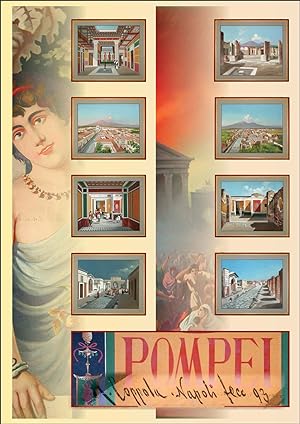
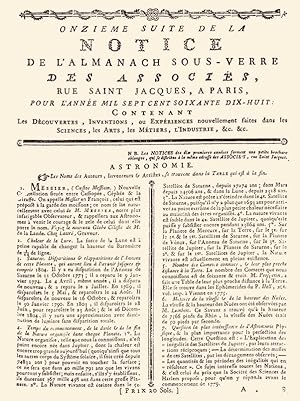
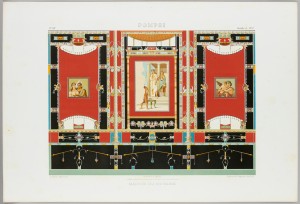
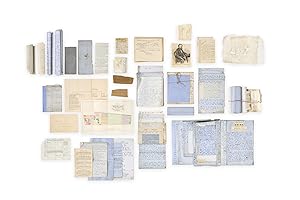
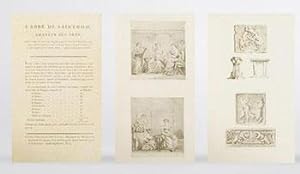
![Immagine del venditore per [VUES PITTORESQUES DES RUINES LES PLUS REMARQUABLES DE L'ANCIENNE VILLE DE POMPÉI] venduto da Phillip J. Pirages Rare Books (ABAA)](https://pictures.abebooks.com/inventory/md/md31336472923.jpg)
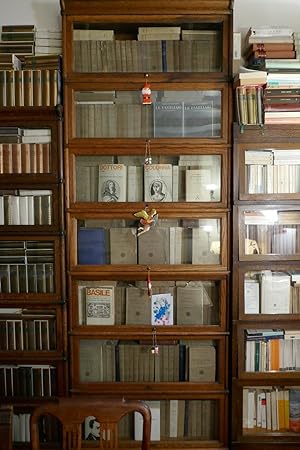
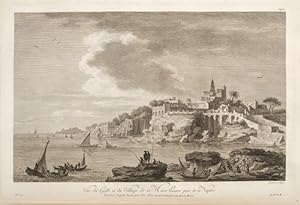
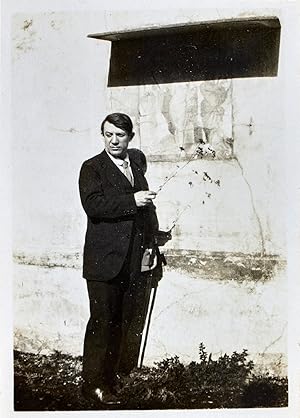
![Immagine del venditore per BALLETS RUSSES. PROGRAMME. PARIS 1917. Les Ballets Russes a Paris. Représentations Exceptionelles avec le gracieux Concours des Artistes de M. Serge de Diaghilew. - Programme des Ballets Russes. Les Ballets Russes à Paris. Saison - Mai 1917. [Guillau. - [HAND-PAINTED BY PICASSO - COINING "SURREALISM"] venduto da Lynge & Søn ILAB-ABF](https://pictures.abebooks.com/inventory/md/md31177950778.jpg)
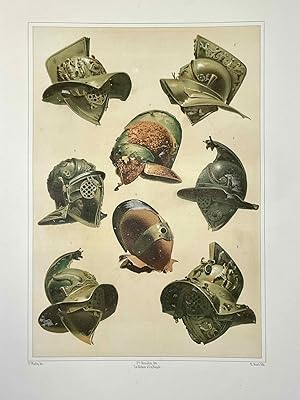
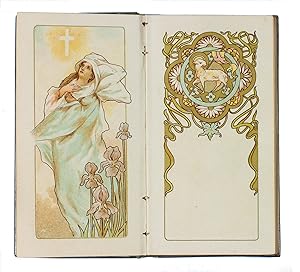

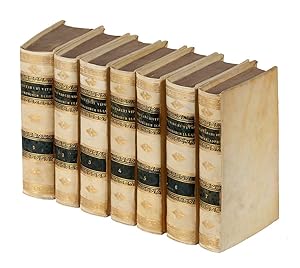
![Immagine del venditore per [Italian Trades and Costumes] venduto da David Brass Rare Books, Inc.](https://pictures.abebooks.com/inventory/md/md30934102001.jpg)
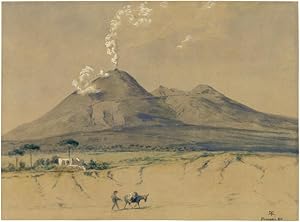
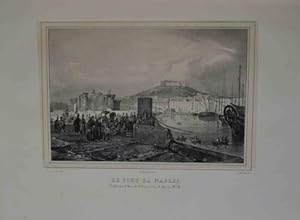
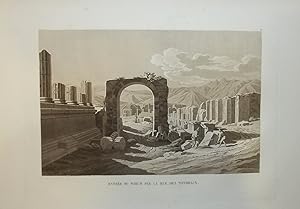
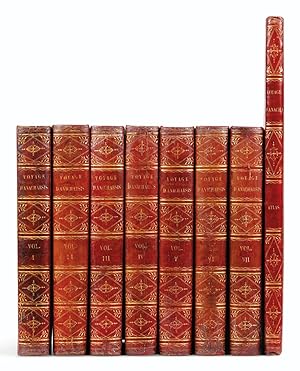

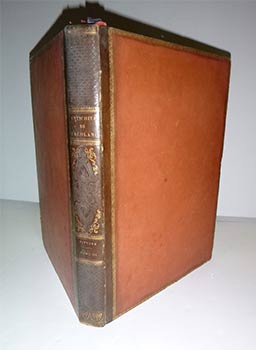
![Immagine del venditore per VOYAGE DU JEUNE ANACHARSIS EN GRÈCE, dans le milieu du quatrième siècle avant l'ère vulgaire. Quatrième édition. [7 volumes de texte et un atlas]. venduto da LIBRAIRIE ÉRIC CASTÉRAN](https://pictures.abebooks.com/inventory/md/md22429422048.jpg)
![Immagine del venditore per Trogi Pompei externae historiae in compendium ab Justino redactae.Including: PROBUS, Aemylius [recté NEPOS, Cornelius]. De vita excellentium imperatorum liber.VELLEIUS PATERCULUS, Caius. Historiae Romanae duo volumina, .(Colophon: Florence, Philippo Giunta, 1525). 3 works published as 1. 8vo. With Giunta's woodcut device on the title-page and a nearly identical one on the verso of the otherwise blank last leaf. Set in an Aldine-style italic, with numerous spaces with guide letters where manuscript initials could be filled in (left blank in the present copy). Dark green gold-tooled morocco (ca. 1833?), the with AAR-monogram of Antoine Augustin Renouard, gold-tooled board edges and turn-ins, pink watered-silk endleaves, matching ribbon marker, gilt edges. Attributed to the Bradel family in Paris, probably Antoine Louis François Bradel. venduto da Antiquariaat FORUM BV](https://pictures.abebooks.com/inventory/md/md22773865835.jpg)
![Immagine del venditore per [Carmina] ad Hieronymum Sanvitalem Salae Principem. Manoscritto cartaceo (autografo?). [Reggio Emilia?], prima metà del XVI secolo venduto da Govi Rare Books LLC](https://pictures.abebooks.com/inventory/md/md30873030283.jpg)
![Immagine del venditore per [Epitome historiarum:] Justini historici clarissimi in Trogi Pompei historias exordium.Lucii Flori gestorum romanorum epithoma. venduto da Bernard Quaritch Ltd ABA ILAB](https://pictures.abebooks.com/inventory/md/md31351554180.jpg)